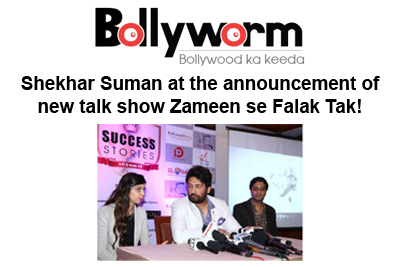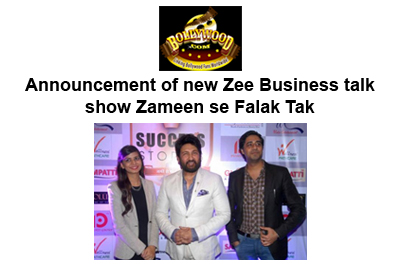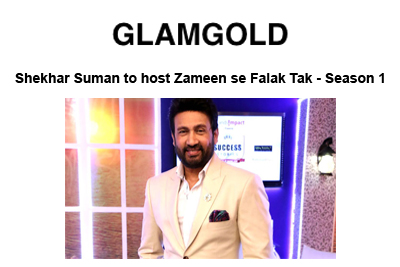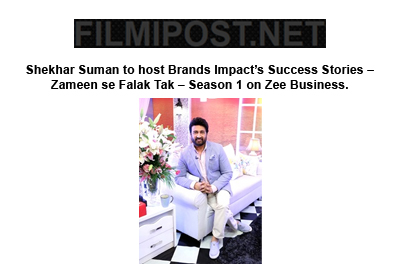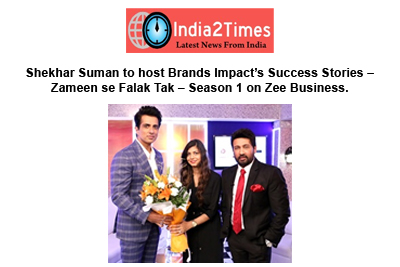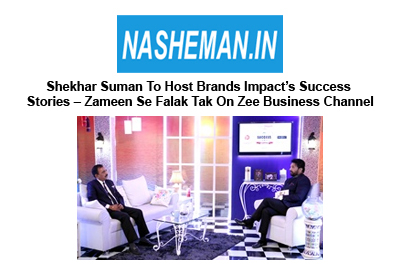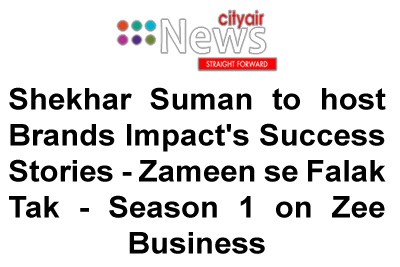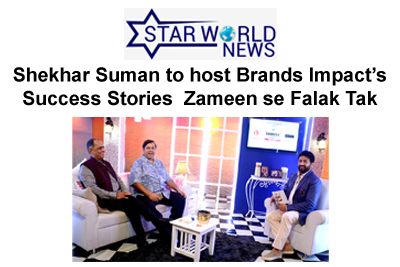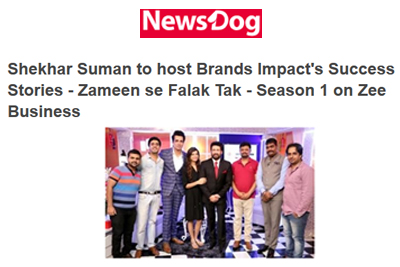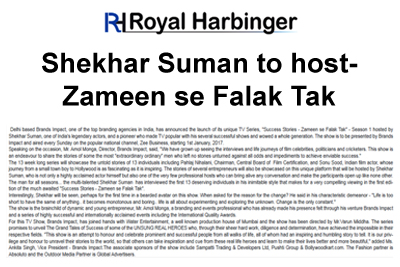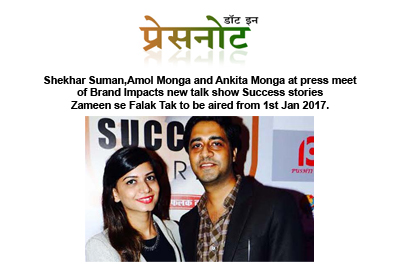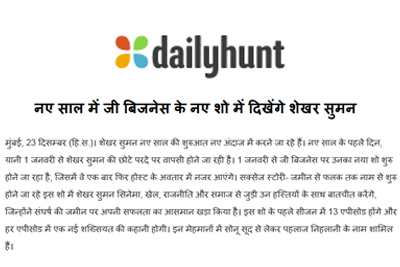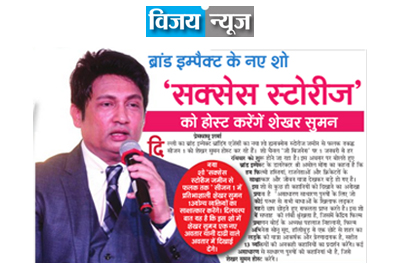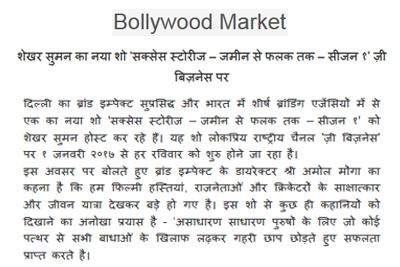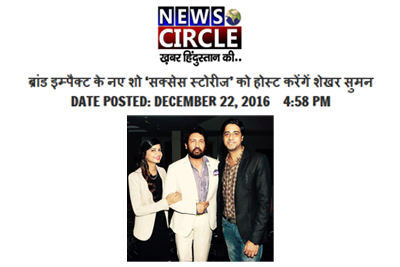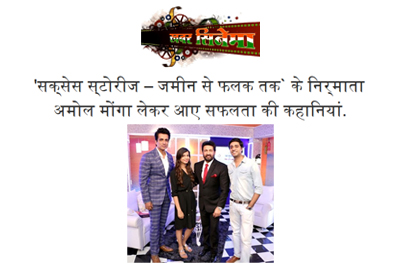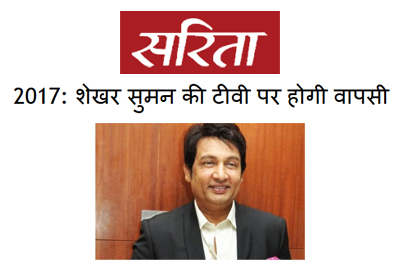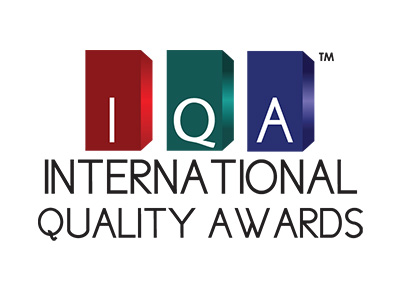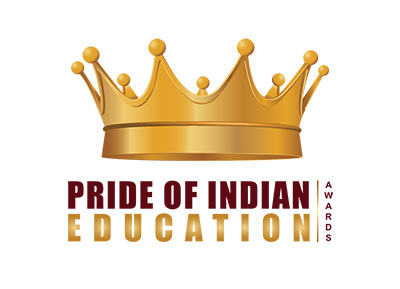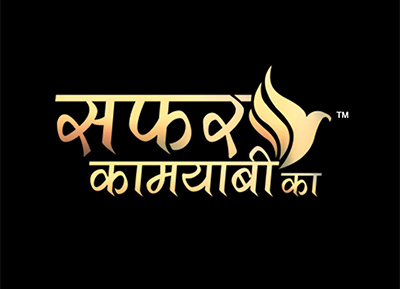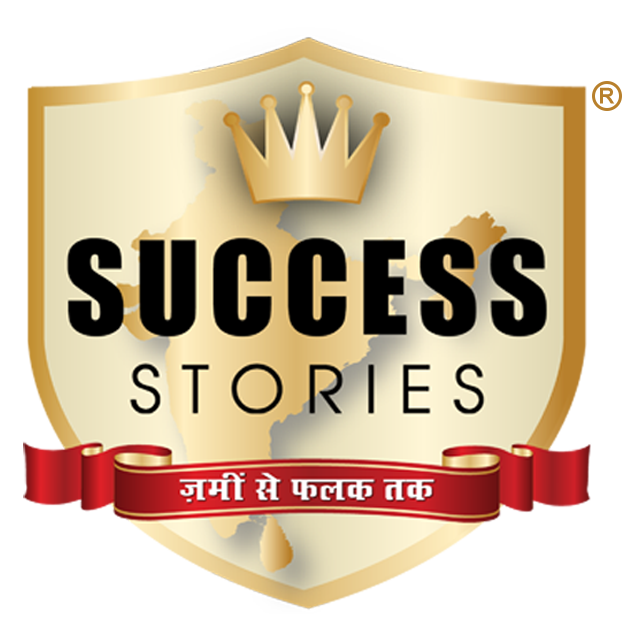

Brands Impact presented "Success Stories – Zameen se Falak Tak" – Season 1 was hosted by Celebrity actor, producer, director, singer, presenter, and writer Shekhar Suman, and was broadcasted on National News Channel Zee Business. The show started from 1st January 2017 and the series unveiled The Grand Tales of Success of some of the UNSUNG REAL HEROES who have miraculously achieved great heights of success today and it was aired every sunday on the channel.
The show focussed on 13 deserving celebrities/entrepreneurs in the most interesting fashion. The 13 week long series showcased the untold stories of Pahlaj Nihalani, Ex-Chairman – Central Board of Film Certification, Sonu Sood, Bollywood Actor, and David Dhawan, Film Director, who rose from being common people to famous Bollywood actor & directors. The show was also an attempt to honour and celebrate the successful people from all walks of life, and across all age and profession. They all had a story and we presented it to the society so that others can take inspiration from these living legends and benefit from it".







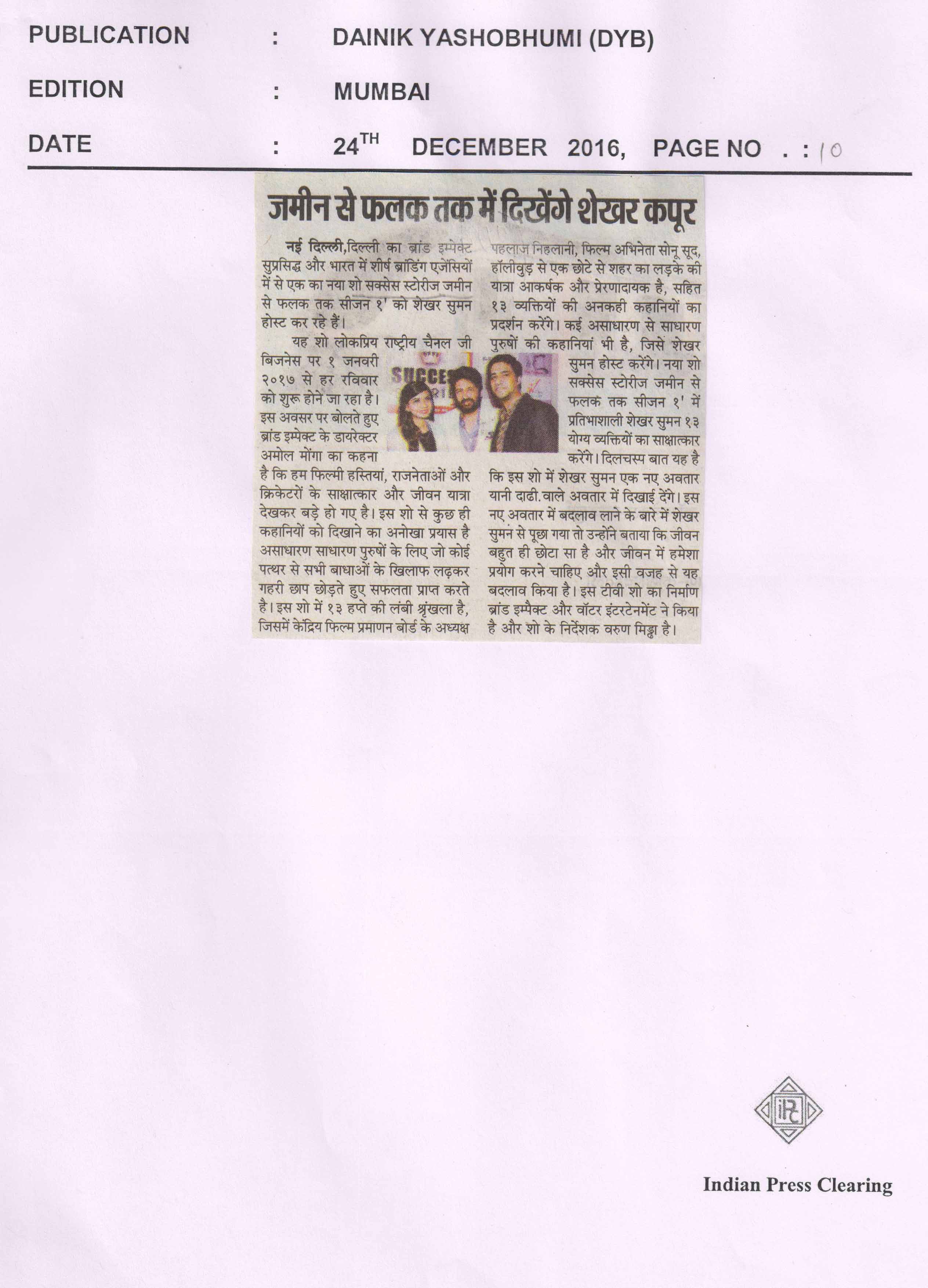
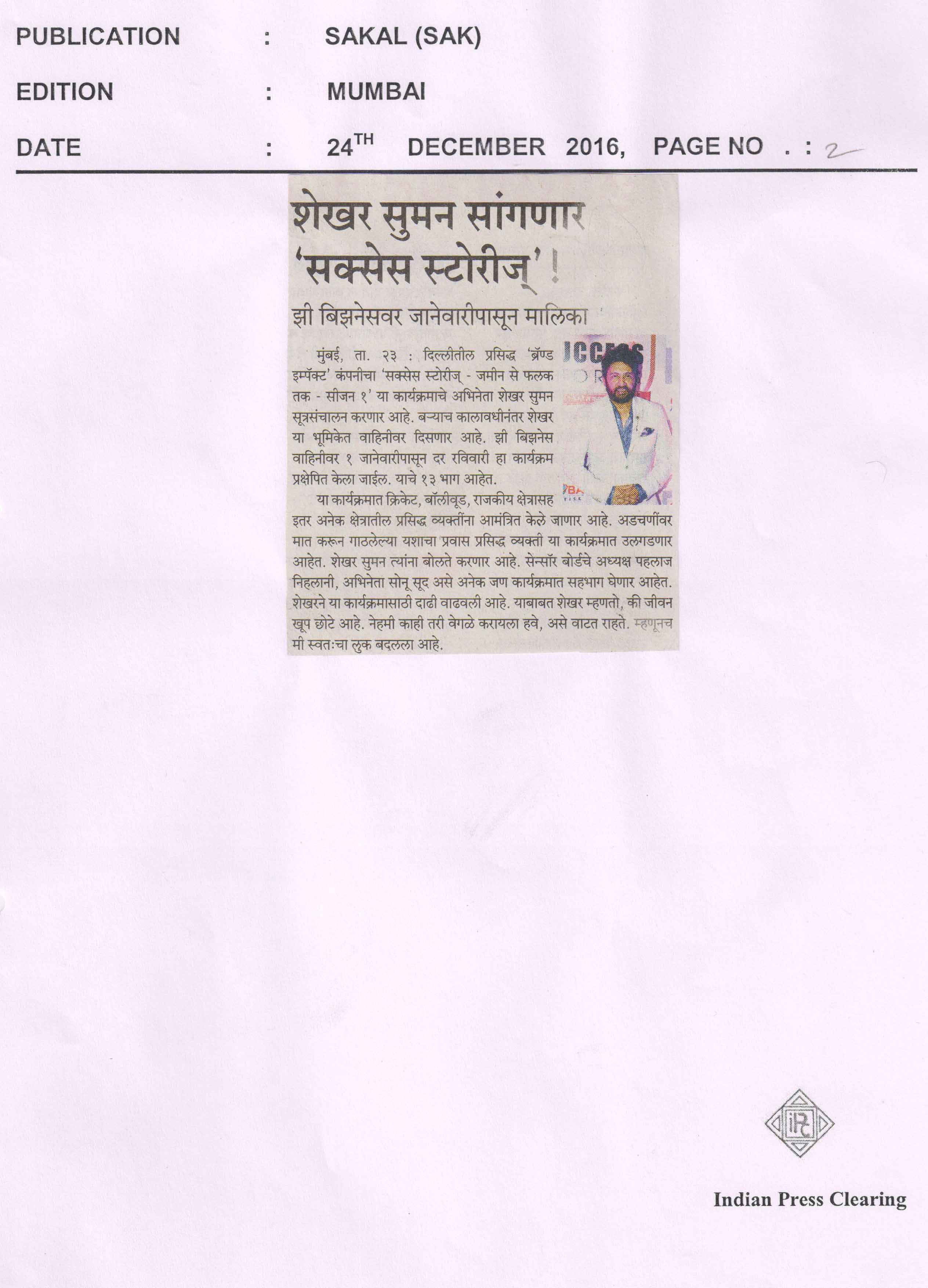
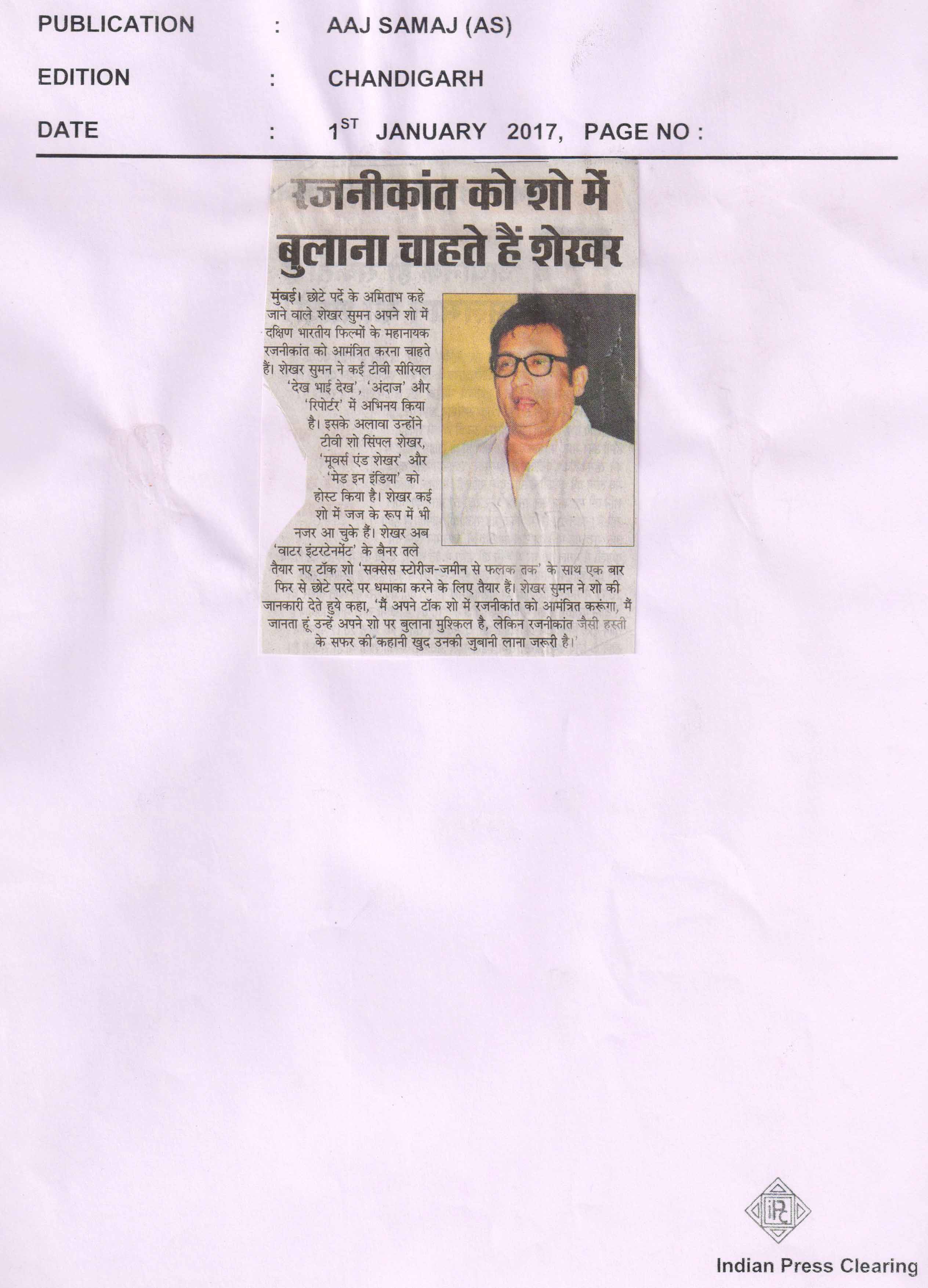
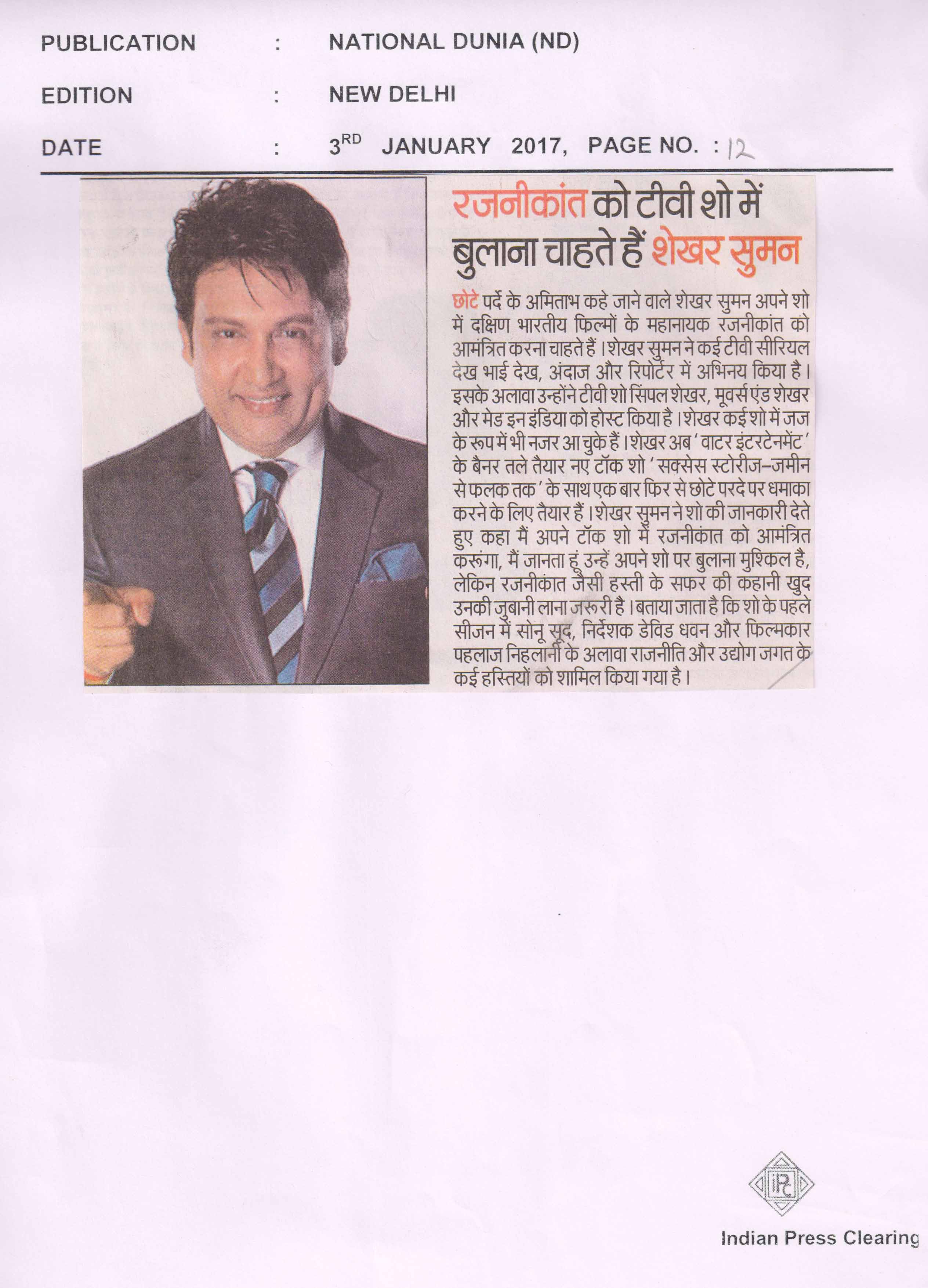
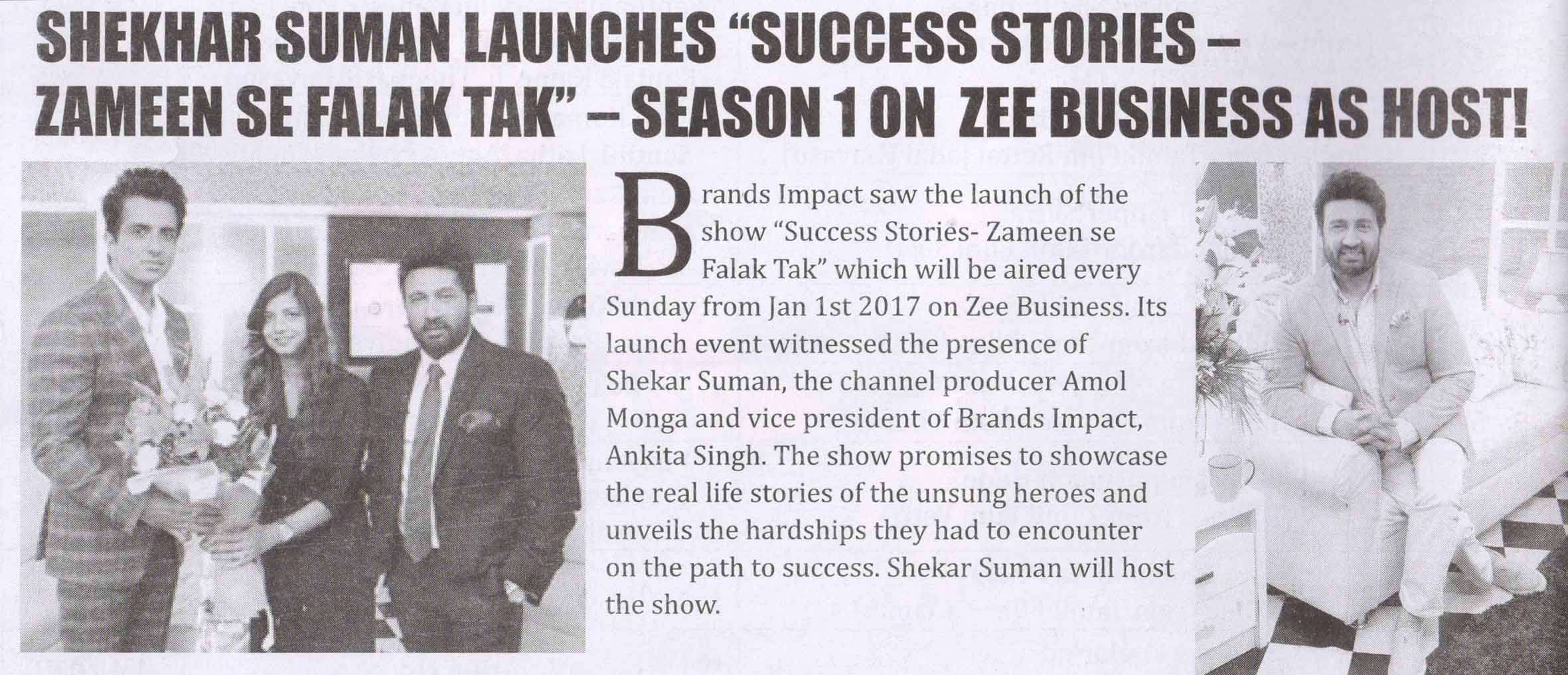

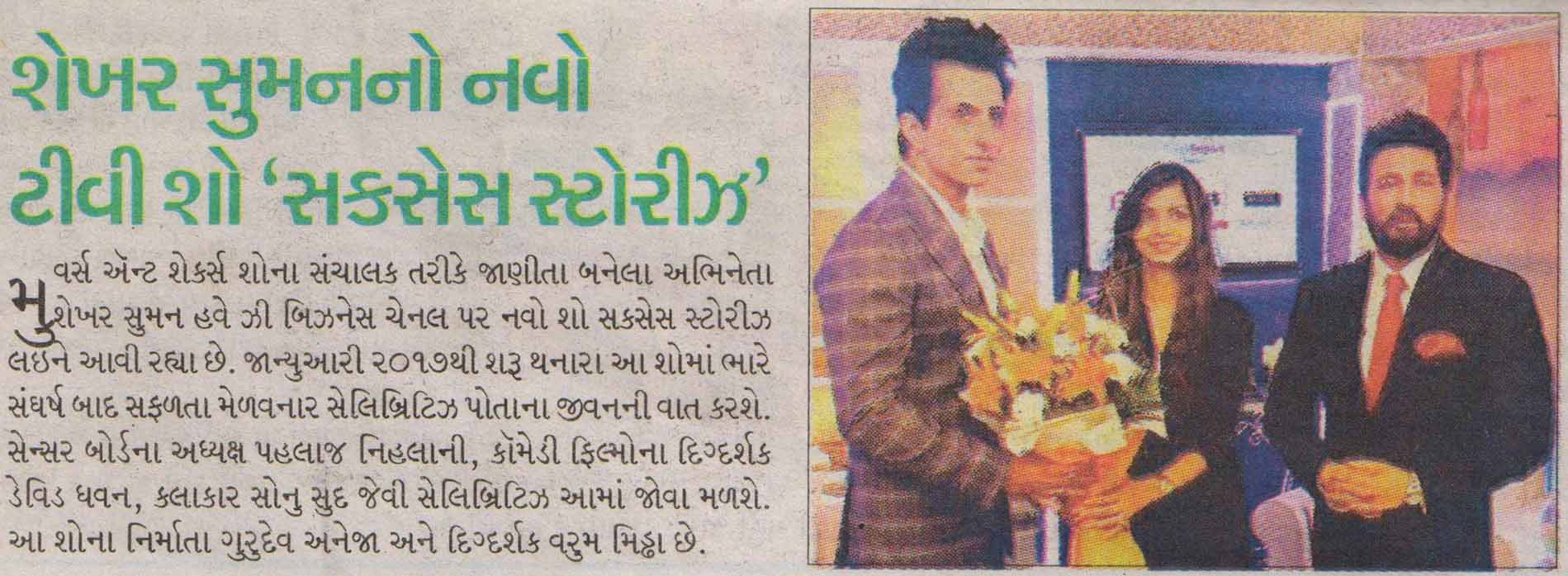
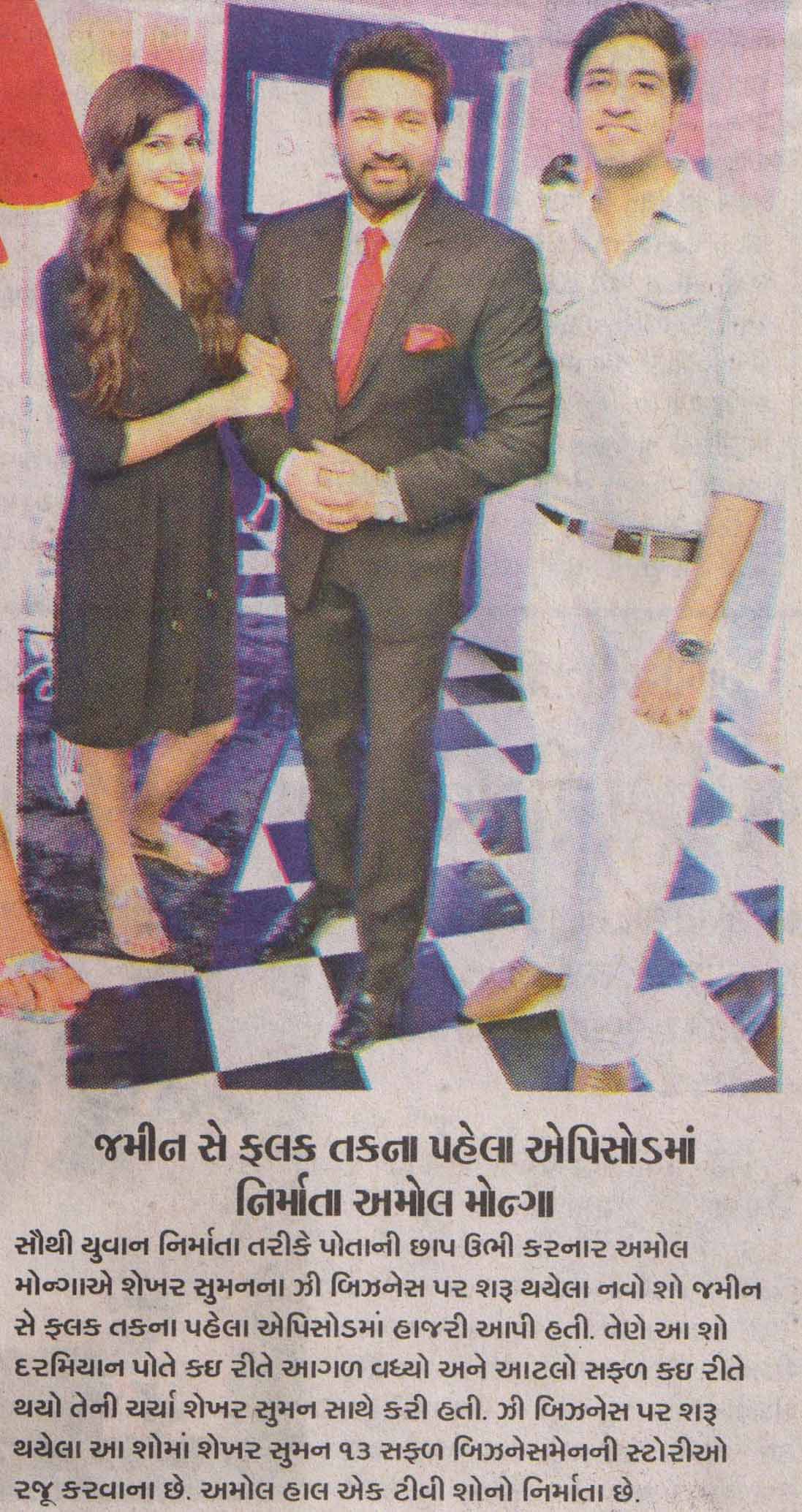
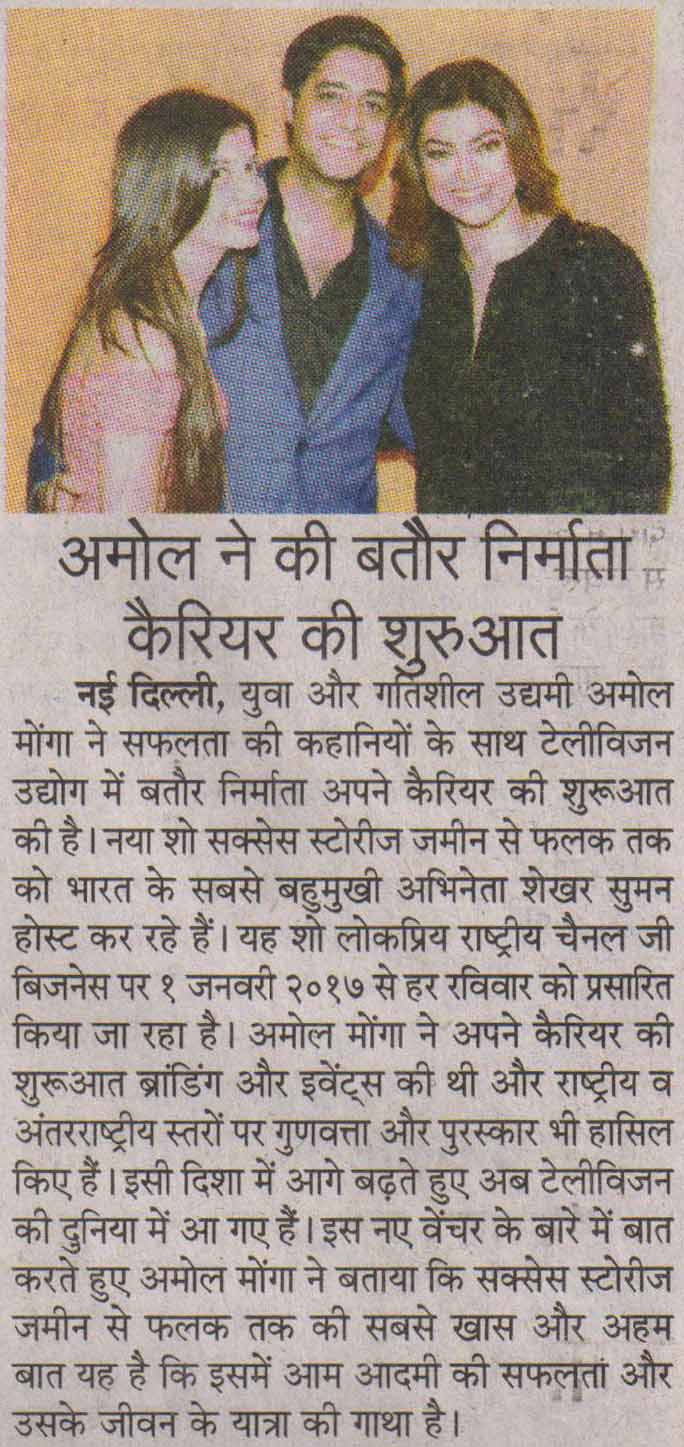
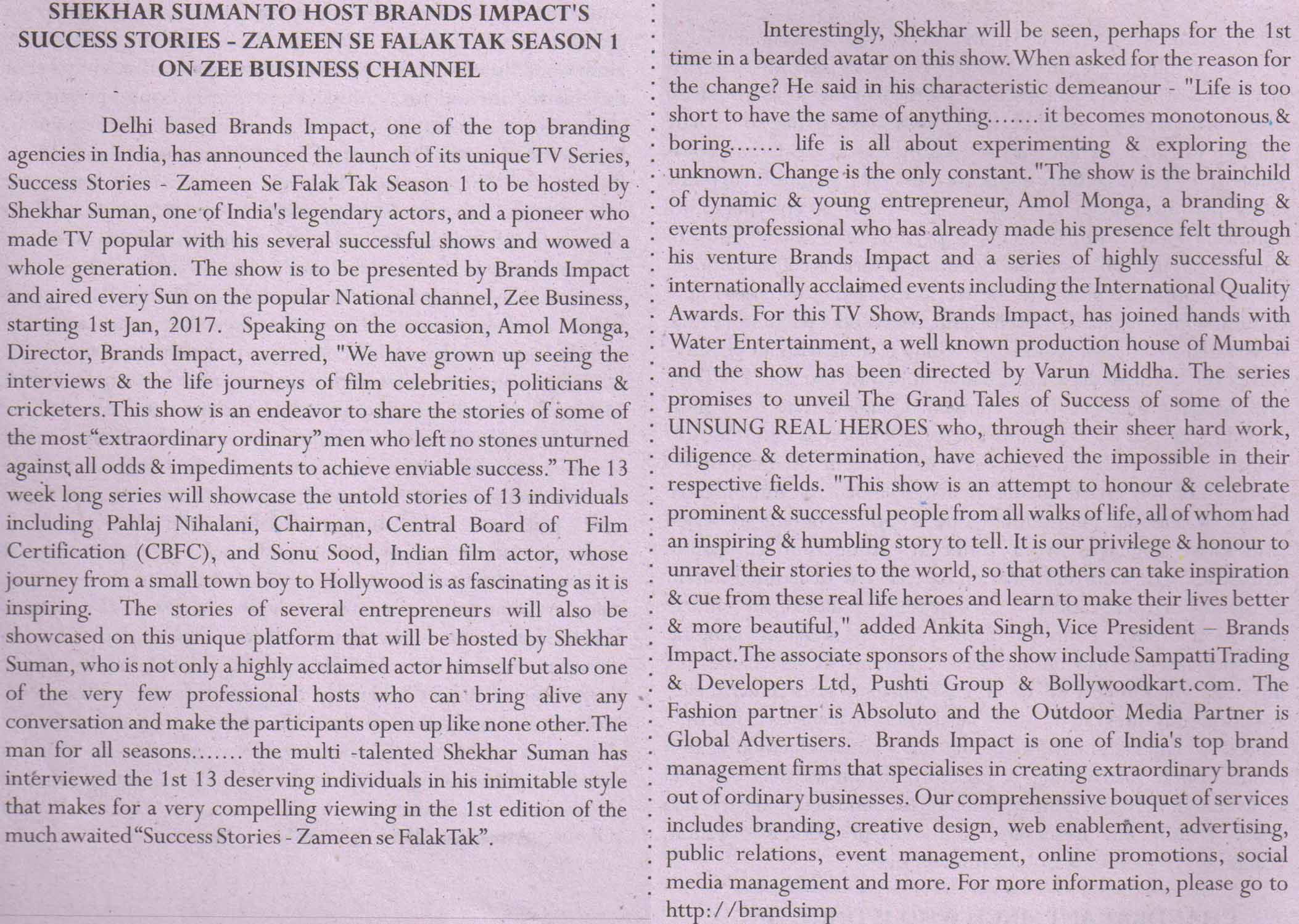
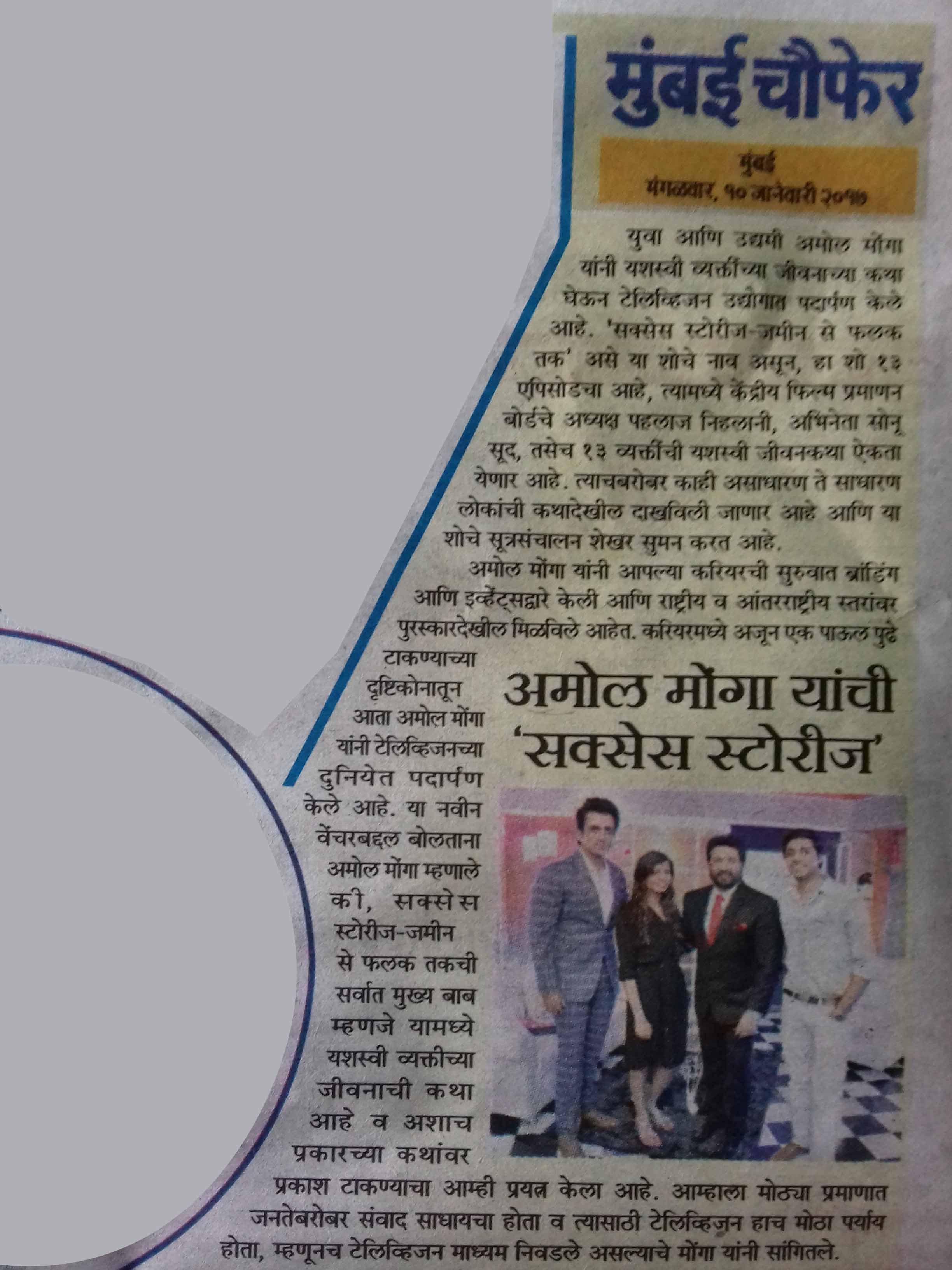
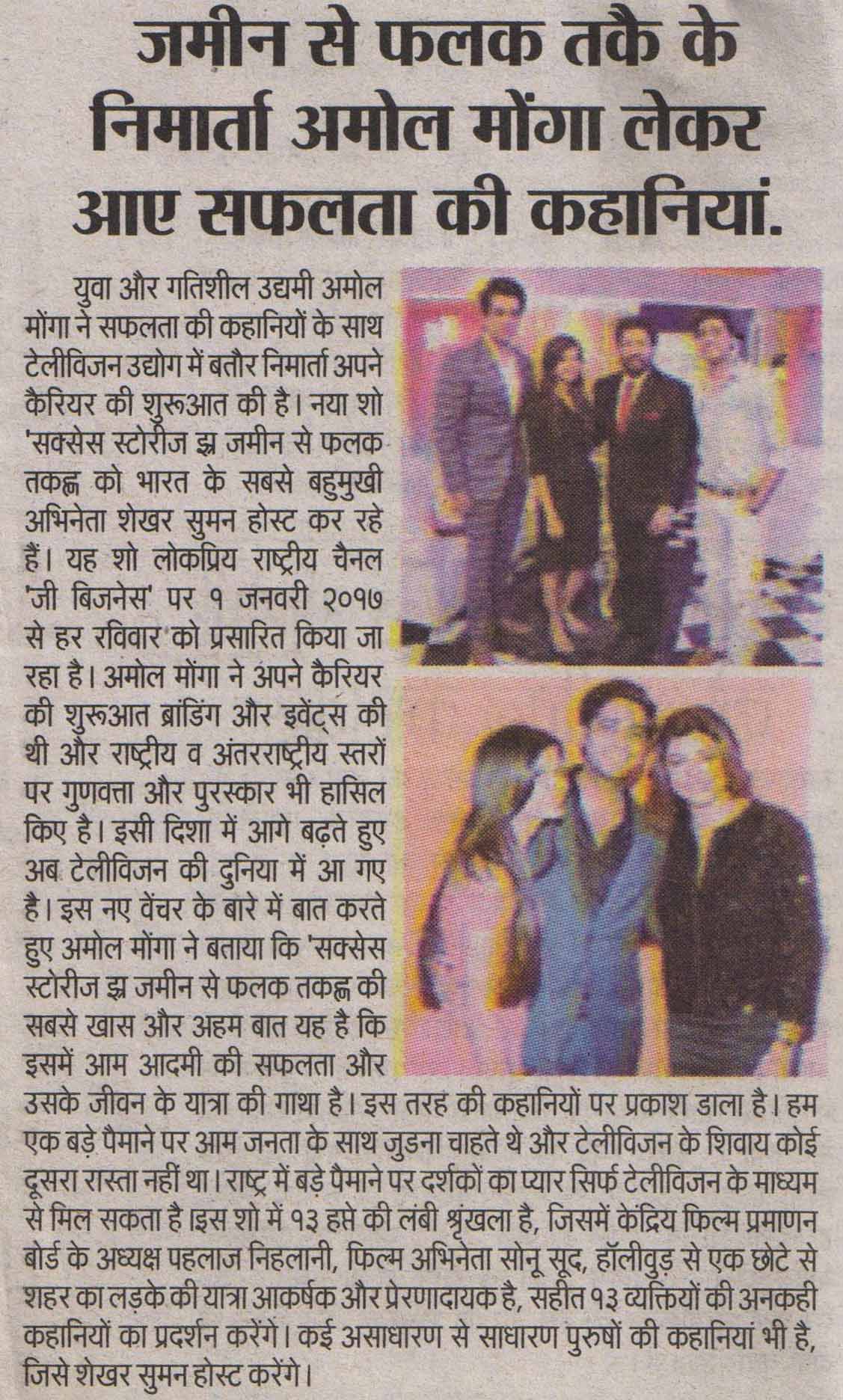


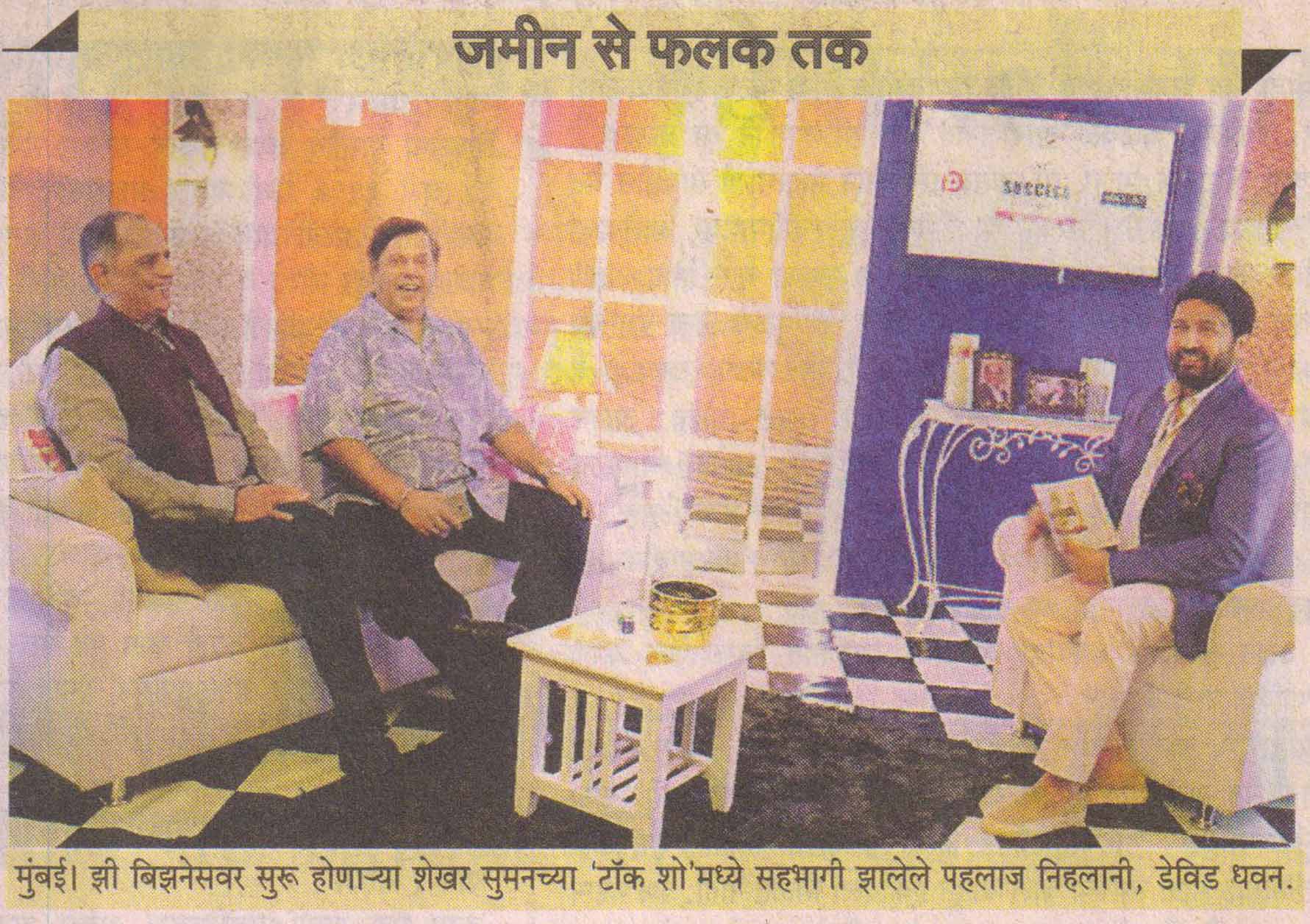
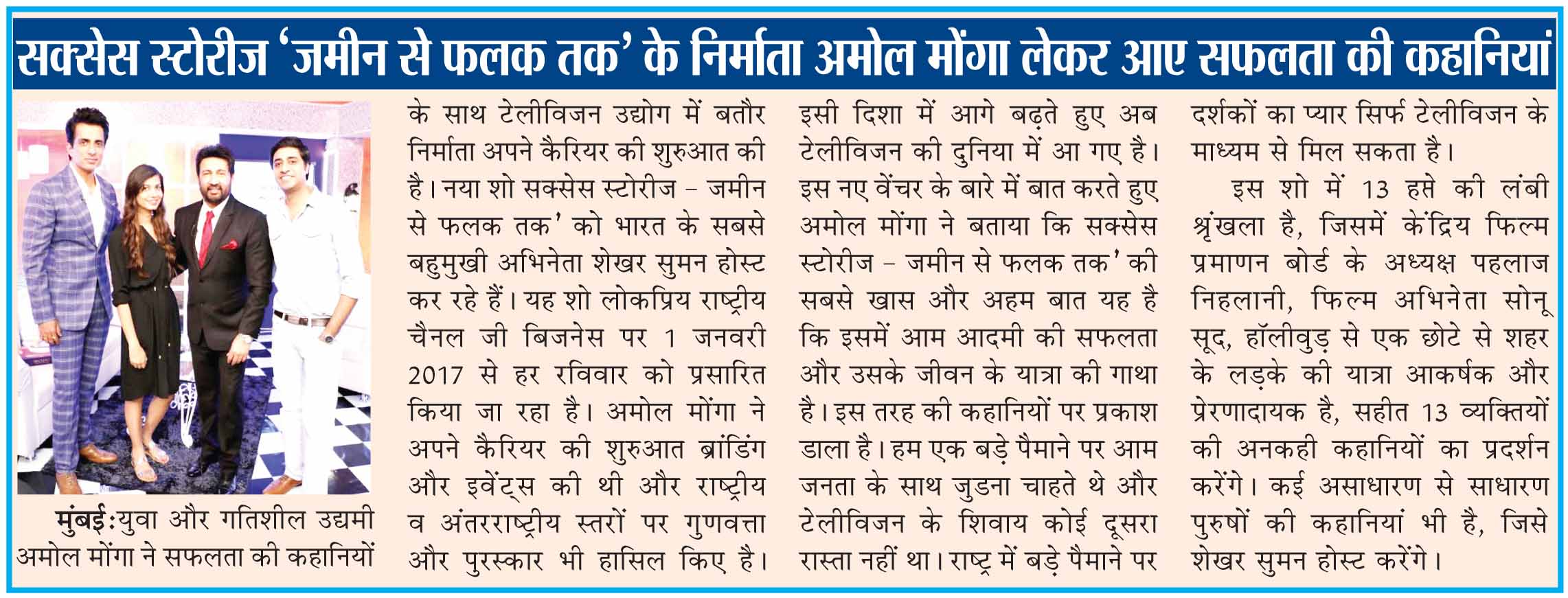
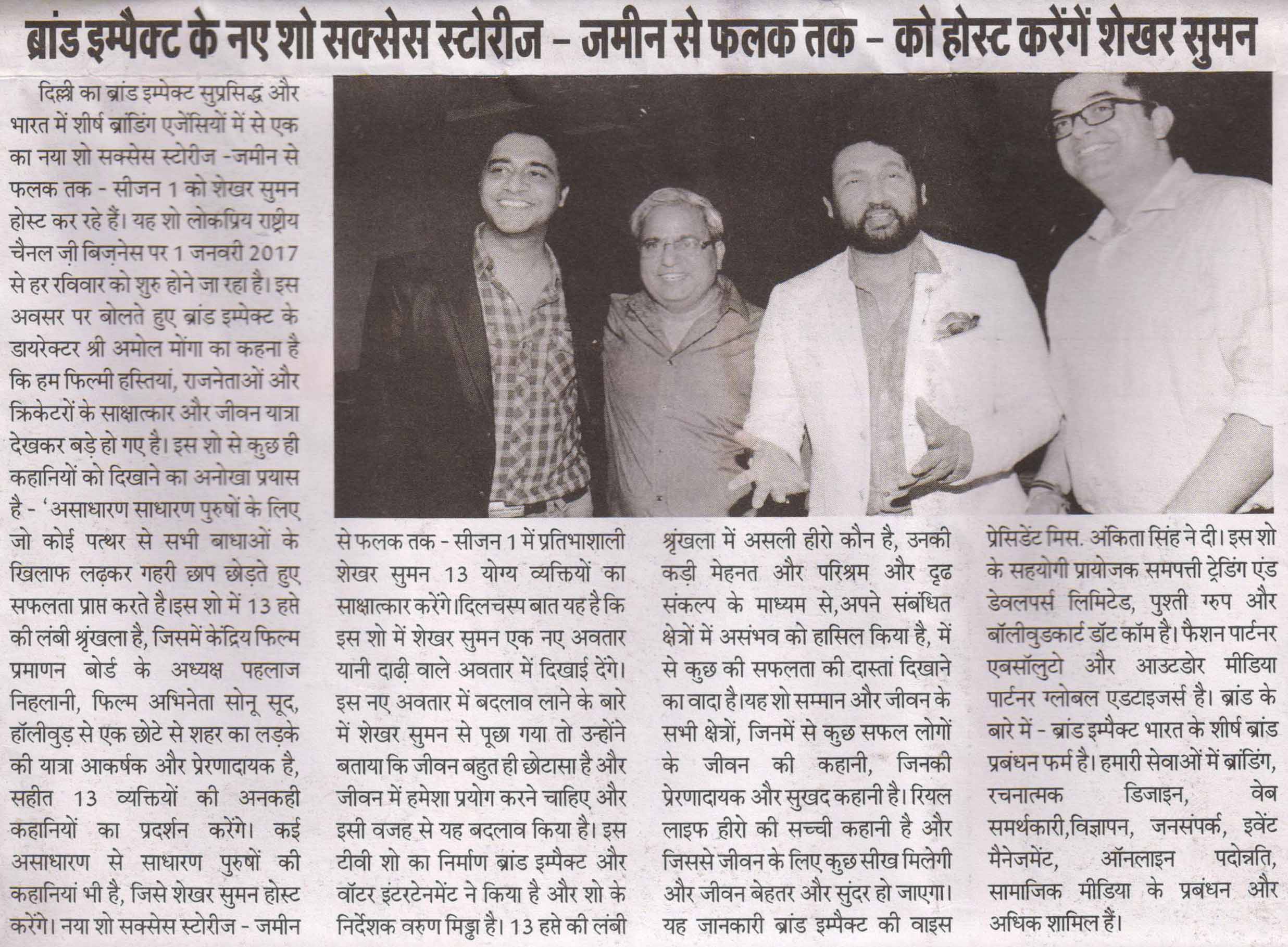
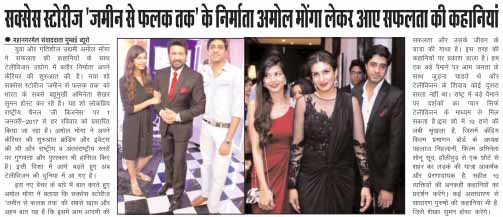

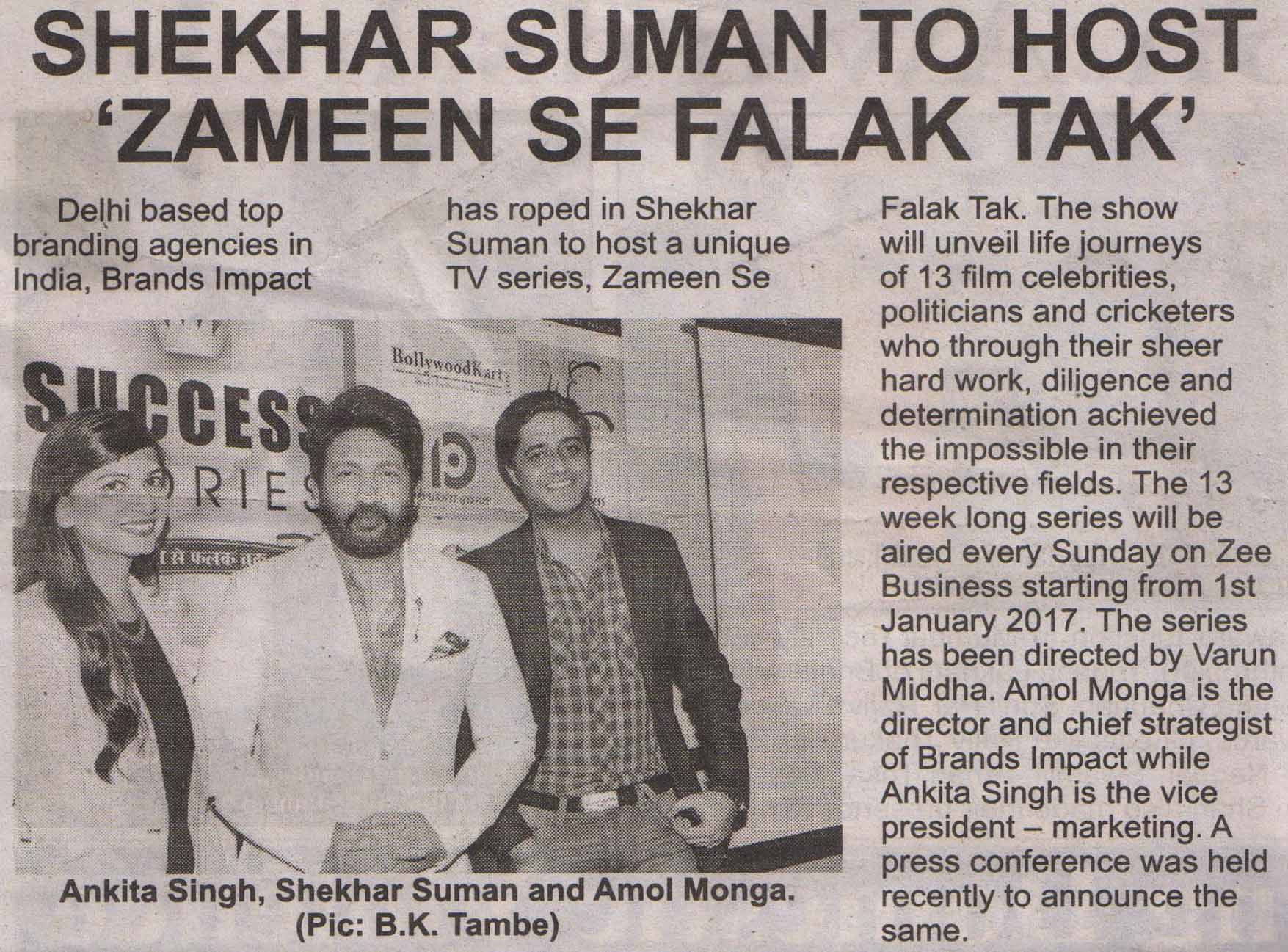
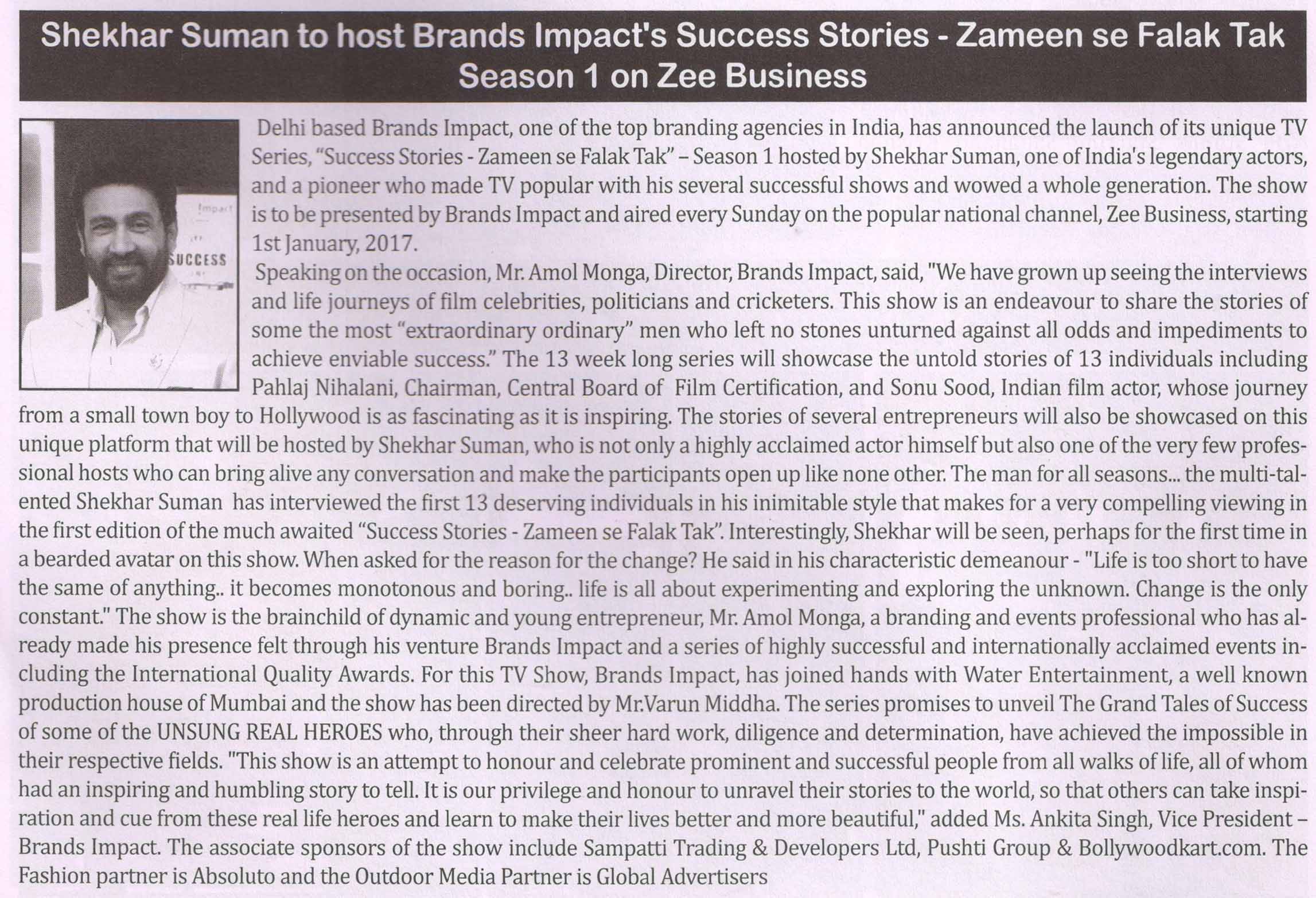































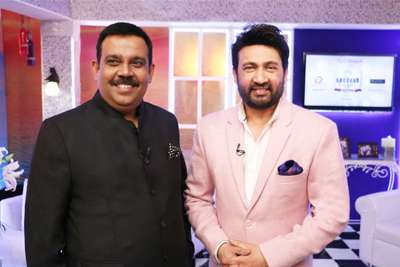
For Rajesh Singh, success has formed different meanings at varied junctures of life. From his first ambition–when he was as young as 10–to make his father’s name live on, to currently making his son’s name the most sought after name in holistic education, Rajesh has always put his family first.
His hard-working nature, grit and self confidence in anything that he believes in has continued to ensure that success follows him, no matter what path he chooses.
Born and brought up in the oldest town of the world, Benaras he didn’t have an easy childhood. He and his elder brother attended a prestigious school, lived in a decent locality but he started to realize that his father worked really hard. He could see that their father only cared for his children and their happiness. He made sure that they were best taken care of even if he didn’t earn too much.
All of ten, he was inspired and motivated having seen his father toil so hard. It left him pondering on how to make his father’s life better and make sure that his father got the due for toiling hard. He dreamt his first dream: to ensure that his father’s name lived till eternity. That point on, he focused all his energies on doing well academically and keeping away from all the fun and indulgences kids his age would revel in. Very strong-willed and adamant on making things happen for him, no matter what sphere: personal, professional, or artistic–he never learnt to give-in. Boys his age would be seen bunking school and watching movies but he was seen spending time studying the markets around him, of understanding how businesses work.
When in college, he studied well along with doing odd jobs to support himself and to put his knowledge to use. He also became active in collegiate politics. It was during his master’s days when he fell in love with the woman of his dreams. The first love, he was smitten by her, much like the breeze, softness and soothing shine of moon, as he fondly calls his wife, ‘Chanda,’ came to his life and rendered him the support to achieve all his dreams and fight the world. But it was not easy either. In the conservative times back then and in a town even more conservative, love marriages and dating were alien concepts. Sunita came from another town to pursue her PhD and during her masters’ days is when Rajesh approached her via a friend. She refused explaining that he was into ‘politics’ and didn’t seem to ber very focused on education. He was disappointed but didn’t forget her, but didn’t talk to her too. But during the last days of college is when they got talking and decided to marry immediately. This, they did without the consent of either of their families.
That fateful, auspicious day, all he had was 1200 rs in his pocket. They spent 450 in buying a mangalsutra, 150 in a saree and rest to the pandit and travel expenses. At first the family resisted but then they fell in love with Sunita so much more than anyone would have expected. She had won their heart and soul. Soon they were blessed with two sons: Kunwar and Parth.
He started working with his brother in a coal business. They started trading coal and would have days when they would come back home painted in the black of the coal. This went on for six years, as they realised that this was a sinking ship and would not grow as much in future. Rajesh was also wondering on how to make his father’s name live on. Till one day he decided to shift to Lucknow in 1998. A growing city Lucknow, offered immense opportunities and he saw great potential in real estate. It is here that a new journey started. It is here that Rajesh Singh made a new life. It is here that he loved and laughed, lived and believed. In the name of his father he found Dayal Real Estates (need to cross check). In an effort to do it for the people who really needed a place to call their home, they first launched residences for people
“I had seen the pain of making one’s house and the effort that goes in it. I had also seen the pride and happiness at owning your own abode and I had felt the peace of sitting in your home and calling it your own. I wanted to give the same feeling to the people for whom, a home was a distant dream, for the ones, the means were limited but dreams were not,” explains Rajesh Singh. Growing at leaps and bounds and hitting milestone after milestone, he had to sacrifice a lot of family time, he went on to construct apartments and now has over 5000 residences in ten years, to his credit only in the capital city of the largest state of Uttar Pradesh.
He built township after township, moved from smaller houses to farm houses, to building one of the fanciest hotels of Lucknow, and another one was under-construction. In between, he also ventured into satisfying his creative side, he made two feature films: Fareb and Anwar. The latter is very popular for the song ‘Maula Mere Maula.’ Through Anwar he brought to us the music director, Mithun, who has been scaling heights after heights after his talent was recognized by Singh.
Everything was going fine, and their second hotel– which was under-construction–had already been awarded the “Best Future Hotel of The World Award.”
But life, as he said, brings in the tough times that can give a new meaning to one’s existence, so happened with him. In a most unfortunate incident, he lost is first born son to a heart-attack. This broke his heart but inspired him to live life and reach out to more.
Kunwar was travelling from Lucknow to Delhi in a train with his friend. Back in Lucknow, his parents were out for their morning walk in a park when they got a call by Kunwar’s friend that something was not alright. It turned out that Kunwar had died of a heart-attack in the middle of the night before. Shattered and broken, the family accepted the fate but couldn’t believe in the absence of their big boy. Singh stopped the construction of their second hotel immediately to start a school in the memory of Kunwar. On 13th Jan, 2014 which would have been Kunwar’s 21st birthday, he launched Kunwar Global School which is affiliated by Cambridge. Aimed at providing holistic education and care, the school is a family for the parents and its 150 students are all reflections of Kunwar in some or the other way.
“When I see Kunwar’s name on the T-shirts of the children, I feel he is around. I like to have lunch with the children and make sure that they feel at home. I have missed a lot of time in building the empire but now I wonder what for? In running around so much, I never lived my life,” adds a saddened Singh.
While Parth went to study in Mumbai, Kunwar and Rajesh bonded over a lot of things and in his last few years, Kunwar and Rajesh grew very close. Rajesh calls him his ‘best friend’ that he lost too soon in life. Today he finds peace and happiness in the smiles of these children and imagines his Kunwar to be in the 150 faces that are in the school. In his words, "I wish to see thousands of Kunwar’s doing well and going out in the world making sure his name lives on."
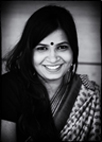
Megha Mishra
A development Sector Professional who started her career in journalism with names like TOI and Tehelka. What inspires Megha the most are the stories of people who learned to fight, to make it large. As an editor for India’s Most Inspiring Success Stories, her aim has been to bring out the stories that inspire to aspire. And for her, it has only reaffirmed her faith in dreaming and achieving.
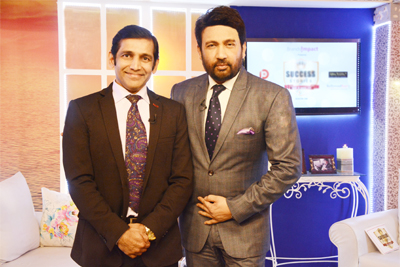
What is life if you can’t be happy, if you can’t be in love, if you can’t be at peace? What is life if you don’t know your purpose of being, if you are unable to find meaning in your life? What is life, if you have questions unanswered and troubles mounting up leaving you troubled? What is life if you can’t sort it out and be healed, happy and healthy? Answering these and many hundred-thousand questions that trouble your day to day life and restrict you from reaching your highest potential is Dr. Sanjoy Mukerji, whose own life is no less of an adventure: A life of learning, of forgiving, of letting go, of being positive and of believing in oneself!
For Dr. Sanjoy Mukerji success is not limited to wealth and fame, he believes, "You are truly successful in life, when you have peace, happiness, health, of course wealth; and lots of love in your heart and life."
On 2nd June 1963, Sanjoy was born to a lower middle-class family in Mumbai with origins in Bengal. While growing up, he developed a keen interest in spirituality, but he was not religious. He wanted to contribute towards humanity in some way, and medicine seemed to be one of the best professions to start this ‘journey of giving’. But his family couldn’t afford it, as they had limited means. His mother’s courage, and his father’s scientific bent of mind, sincerity and integrity were Sanjoy’s founding principles. In his teens, Sanjoy was quite an extraverted personality which was exactly opposite to his elder brother, who was an introvert. An eclectic and active child, Sanjoy was found participating in almost everything in school. Eveready to take on any challenge and do anything, Sanjoy followed his father’s mantra of ‘do-it-yourself’. His reality check of ‘remembering your financial constraints’ was the foundation that formed the basis of his start in life. This led to Sanjoy’s decision of enrolling into a BSc and not MBBS for higher education. "We had limited means and it was not possible for my father to fund my MBBS fee, so I decided to take up Bachelors in Science in a Mumbai college," explains Dr. Sanjoy.
He was excellent in studies as well as in sports, dance, drama, body-building, and many other extra-curricular activities – a true all-rounder. No wonder, he won the all-rounder and best student of the year awards several times. Life was fun and interesting for him. His achievements made him a heartthrob in college and garnered enough attention by female co-students. In the last year of his college, he came across a first year student Kushal, who was ‘as beautiful as a fairy’. Sanjoy was enchanted. A love story nothing less than the ‘love at first sight’ from a Bollywood movie, she eventually became his wife.
Kushal was an all round personality who also worked as she earned. While she was serious about earning a livelihood and was a private person, Sanjoy was earning fame and accolades. A very outgoing and extroverted person he was always ready to help anyone in distress. But with her love and support, Sanjoy focussed on picking his skills to find a career that would help him excel in various aspects. An empathetic conversationalist and an active being, he started out as a Medical Representative in a Pharma company in Mumbai after finishing his Bachelors in Science in 1985. He took up this job, as his intention was to work in a field where he could help people become healthy; and since he didn’t have a qualification to treat them, he started with helping them in getting the right medicines. He married the love of his life, Kushal, on 4th February 1990. They were the most envied couple in their surroundings. At work, his skill and determination paid rewards and he kept getting promoted every 9 months to a year till the next five years in one company. While working, he also completed his management studies.
Kushal was an all round personality who also worked as she earned. While she was serious about earning a livelihood and was a private person, Sanjoy was earning fame and accolades. A very outgoing and extroverted person he was always ready to help anyone in distress. But with her love and support, Sanjoy focussed on picking his skills to find a career that would help him excel in various aspects. An empathetic conversationalist and an active being, he started out as a Medical Representative in a Pharma company in Mumbai after finishing his Bachelors in Science in 1985. He took up this job, as his intention was to work in a field where he could help people become healthy; and since he didn’t have a qualification to treat them, he started with helping them in getting the right medicines. He married the love of his life, Kushal, on 4th February 1990. They were the most envied couple in their surroundings. At work, his skill and determination paid rewards and he kept getting promoted every 9 months to a year till the next five years in one company. While working, he also completed his management studies.
But there was a deep within desire to be a doctor that had to be fulfilled. Maybe life knew a way of giving him that what he asked for. After jumping out of his first company, he changed several jobs and was popular by the tag of a ‘job hopper’ but only to resign as a Vice President in the end. During his tenure at work, he realized that doctors and drugs can only treat diseases; the onus of our health was on us. He affirms that it is a lifelong responsibility of an individual to stay healthy that’s a mix of lifestyle choices, patterns and is much more than conventional medicines.
A secret plan was in the making.
While working, side by side he also did Post Graduation in Psychological Counselling, and soon after he also did Doctorate in Mind-Body Medicine, which is a branch of Alternative Medicines. In 1997, he quit his stable job and started his private practice in 1998 as a psychologist and counsellor. Moving from a platform of financial stability to starting afresh was not easy. But he managed beautifully, because of four pillars: Kushal’s emotional and financial support, his motivation, their ambition for a good future, and skills. “No matter what and how, she always stood by me and that’s why I could do everything. She was my backbone,” said Dr. Sanjoy. In the very first year of the practice, he won a Gold Medal for Mental Health Care by the Special Executive Magistrate Society. This was due to the unique amalgamation of Western Psychology with Eastern Spirituality. But that was not enough–a very enterprising and ambitious being–Dr. Sanjoy wanted more from his life and career.
In spite of this achievement, and being skilled, this was not an easy ride.
From 1999 till 2004, there was hardly any progress. The struggle was on to establish his practice. But along with his work, around the year 2000, he started researching on happiness, "to know where does happiness and unhappiness come from, and how could one be happy, no matter what." As he researched, found the intricacies of happiness entwined with expectations, situations, relationship and work. He applied some principles on his own self to factor the result and effect. Towards the end of 2004, life gave Dr. Sanjoy a big shock. His wife, his pillar of strength, underwent a stroke. Her left brain got highly damaged. The top doctors (neurologists) of Mumbai said that her condition was critical and she would not survive for more than 10 days. All of life started to roll out in front of his eyes and he just knew one thing: he had to make her live. Kushal was not only his wife, but also his life, which was slipping away from his hand. He was quite shattered, but still running strong and solid. He said to himself, “It cannot be! I shall leave no stone unturned to ensure that she revives and survives. There has to be much more to this."
This was the life-changing experience of Dr. Mukerji. The medical doctors were not able to give any well-founded causative factor for her stroke. They were simply beating about the bush; giving reasons like; maybe her blood pressure must have shot up (when the fact was, her blood pressure always used to be on the lower side). This was the time, when Dr. Mukerji started to find the missing link. His question was – “What must have gone wrong to such a fit young woman? Dr. Mukerji himself was suffering from Bronchial Asthma for more than 30 years. He literally cured himself of that with his expertise in mind-body medicine. Lungs, which were his weakest organs, became very strong. So he knew that most diseases can be reversed to a great extent by changing thought patterns and emotions; and with proper physical exercises. Similarly, he started working on his wife right from the second day of the stroke.
He uncovered the main cause of her stroke and that was – she was internally/emotionally very disturbed and depressed as her mother had passed away sometime back, which she could not accept and thereby rejected life. So it is not just physical fitness, but mainly mental health that counts in the long run. He extensively focused on making her better. He used his principles of Mind and Body on her and started to note the results. Slowly she started improving. This not only helped her get better but also helped Dr. Mukerji see his tests result in positive. He then worked a lot on her mind and body with psychotherapy and physiotherapy; and finally she survived but her right side was paralysed. He stopped all his professional work for almost 6 months to give full time and love to his wife.
“Love is the best healer!” he says. She did recover very well but had some deformities. In the interim, he did more research on psychosomatic illnesses and happiness. Then after 6 months he started redeveloping his practice, virtually from the scratch. But this time, with renewed confidence, belief and faith. In the next 5 years, he did a lot of good work; viz., patient counselling and healing, public talks, seminars and workshops. From 2010 onwards, his work started getting appreciated in big ways. More than 50 awards were offered to him over a period of time, out of which he accepted about a dozen national and international awards. A few of them are: Excellence in Spiritual Psychotherapy, Global Achievers Award, Shining Image of India Award, Rank-1 Marriage Counsellor, Noble Son of India Award, Mother Teresa Excellence Award, Rajiv Gandhi Excellence Award, Indira Gan
“SOHAM Happiness Program is the most scientific program on happiness, which gives you the scientific basis of happiness, and also provides you with various methods to apply this science practically in your life. SOHAM stands for two reasons: If you break the acronym “SOHAM” into its alphabets; then each alphabet stands for

Megha Mishra
A development Sector Professional who started her career in journalism with names like TOI and Tehelka. What inspires Megha the most are the stories of people who learned to fight, to make it large. As an editor for India’s Most Inspiring Success Stories, her aim has been to bring out the stories that inspire to aspire. And for her, it has only reaffirmed her faith in dreaming and achieving.
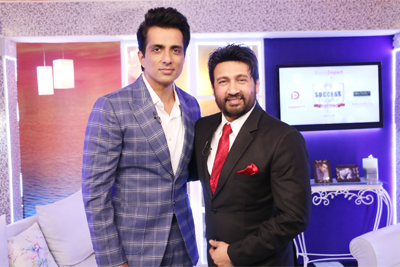
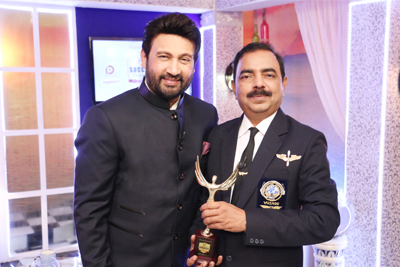
From the field to the sky, from never-ending struggles to being the torchbearer to thousands, from extreme poverty to now being one of the most successful Indian Entrepreneur, Captain AD Manek’s life is not just a story of persistence and passion, but of dreams and self-belief.
It was 1967, when poverty was widespread across villages in India and people were fighting battle for survival. In one such small village viz. Vyara of Gujarat, lived a 7- year old boy, who survived via landless labour. Selling mowed grass at a ‘4 Anna’ for a bundle, he with his aunty would fend for a family of four. But Manek realized that education was a weapon for growth and he continued to excel in primary school.
To continue education and write his 7th class board exams, he shifted to his father’s village: Manekpore, where he walked 6 kilometres up and down each day to attend school. Just like the churning of gold, Manek would walk barefoot in severe heat or walk through swampy roads in rainy season just to attend classes. During the year 1973, in spite of having no electricity in his village, with his perseverance he studied under the oil lamp to prepare for school examinations. To excel in the examinations, he had to take extra classes for which the teacher charged Rs.20/month. But with no money and lack of resources, Manek opted to work all day long on Sundays and school holidays–in the field– to make 1 Rupee and 4 Anna a day.
One day while toiling hard at the field, he saw an airplane fly over his head and that was the start of his life-long affair with Aviation. His life’s biggest dream, at 13, was to fly an airplane.
Manek’s dreams gave flight to his ambition and he decided to come to Bombay where his father was living in slum area of Kurar Village, Malad and owning one room of 10×12 feet and employed as peon in an English-run firm called John Wyeth & Brothers Ltd at Churchgate.
But his journey was not easy he didn’t know English, Marathi and Hindi as he was in a Gujarati medium government primary school in the village. It got tough and his motivation, interest and grades started to suffer and he started going astray from the main goal. But he was not someone who would give up easily. He didn’t let the rod spared by the teacher spoil him but let it polish him as he finished school victoriously. He stayed put and looked for innovative ways to better the language. He watched English movies at 90 paisa per show, talked to foreigners at tourist spots like Gateway of India, Hanging Garden, Juhu Beach and read a lot.
He even worked as laborer in plastic ring factory in Jogeshwari on a part-time basis to support family income till he finished 12th Standard board Examinations. After this, he enrolled into Siddharth College of Commerce in Mumbai and began his formal search on what was to be done to become a pilot. In this process reading about aviation became his building ground. He became a member of American Centre Library, Indo-Soviet Library and British Library. He continued to gain theoretical knowledge about aviation, its history and geography.
Manek read a book about a young pilot Charles Lindberg from the 1920’s. He had designed his own airplane and flew non-stop crossing the Atlantic Ocean in 33 and half hours from USA to Paris and covered 5790 kilometers. He only had four sandwiches and two bottles of water on him. In this book, Lindberg had recounted his hourly experience. This greatly inspired him as the flight was of times when technology only allowed for 2 to 3 hours of a continuous flight and there were no advanced navigation systems in place but this man achieved this great a feet.
Along with his college studies he did part time jobs in offices and factories. As he could not afford to buy books, he read on borrowed books from a Charitable Book Bank ran by a Trust in Charni Road. Before college annual exams, he would borrow exam guides from friends and studied them under the street lamp. He craved for practical knowledge and in the second year of college, he joined the NCC Armour Wing. During NCC training he excelled in rifle shooting and horse riding. As hard work and passion had to have it, he proved his mettle and won the Best NCC Cadet of Maharashtra title in 1983 with a gold medal from former cricketer Madhav Mantri. The media went frenzied knowing the background of this young, angry man who was bent on achieving this tall a feet with hardly any resources.
Manek’s skill and knowledge paid for and he got selected in Bombay Flying Club for his practical flight training but upon knowing his father’s profession of a peon, he was refused admission.
Reading that, Late Mr. Mithaiwala, a businessman from Surat came about to help him become a pilot but the cost of learning to fly and obtain Commercial Pilot Licence was Rs 2 Lacs. Impressed with his vast knowledge of aviation Mr. Mithaiwala tried helping Manek but could only support him with Rs.5000, which was used to enrol into the Gujarat Flying Club, Vadodara. This is where he earned a Student Pilot License and a Private Pilot License.
His story had touched many hearts. Looking out came another gentleman, to form an alliance for his sister. Coming from an affluent background, he even proposed to offer him Rs.2 Lacs as financial assistance, so that Manek could comfortably pay for his education and start a living with his sister. But a self-respecting and individualistic Manek refused to take the money or marry. Honest about his background and the struggles his family was facing, he was upfront with ‘Kumud’ (now his wife). His family home was a mud house with no washroom or any furniture. Not enough source of income and an added responsibility of siblings and parents. Even though there were troubles but she saw a life with him, and agreed to stand next to him in thick and thin.
They married on May 9th, 1984 and had two beautiful sons.
When he would be flying or canvassing through the length and breadth of the country to make aviation work, she would be making two responsible and driven individuals out of the two sons along with the joint family. While Gujarat Flying Club trained him to be a private pilot, he still needed to obtain a Commercial Pilot License to make for a viable career option.
In between he tried to join the Indian Air Force as an Airman but he was disqualified for being underweight, since he had recovered from an appendicitis surgery.
At the age of 28, he was running short on time with 30-years of age as the upper limit to get employment with the Air India or Indian Airlines. The Indian curricula would take 4 to 5 years to finish the CPL course making it impossible for him to while the one in America would make him a fine pilot in 6 months.
In order to sustain and save some for his fee, he then joined National Water Development Agency (NWDA) Ministry of Water Resources as a lower division clerk, Government of India Baroda Office as a CLERK CLASS III Employee. After working for some time with NWDA, he got employed as a typist with Life Insurance Corporation of India, Bardoli Office. He stretched his limits and before and after the office hours gave private coaching tuition to students. But it was not enough to reach the target of Rs.2 Lacs.
He even approached pilot and Hon. Prime Minister Late Shri Rajiv Gandhi, First Pilot of India and Bharat Ratna Sir JRD Tata, many charitable trusts including J.N. Tata Endowment Fund, Sir Ratan Tata Trust, NM Wadia Charities but each of them turned down his application for assistance.
Increasing responsibilities and no favouring conditions, he could see his dream slip away but maybe this was not the end.
In 1985, the newly elected Chief Minister of Gujarat happened to be from his vicinity, Shri Amarsinh Chaudhary, he decided to give it another shot and seek an educational loan from the government. Through the help of a social worker, he got to meet him at 10.30 in the night and narrated his journey so far. Touched by his story, he called his Chief Secretary, Mr. Rama Subba Rao to meet him right then and handed over the case. Next day he grilled Manek on every little to big detail about aviation. He marvelled at his knowledge and immediately gave orders to send ahead a Government Resolution (GR) to help him. This was when discussed in Vidhan Sabha, Opposition Party; Janata Party objected questioning why help one when many could be helped in parts of the money needed. It got stalled for two years but his unrelenting efforts to follow up made him get the file approved. He got the Government Treasury cheque of Rs.1,77,792/- equals to USD 16000/-. His trunk calls to the University in US started and he secured an admission but another roadblock cropped up as Reserve Bank of India Forex Permit was refused on the grounds of ‘not being an airline employee’. His trips started to RBI, Mumbai and then Delhi. He met the Mr. RN Malhotra, the RBI Governor but was refused citing the RBI manual which said the permit for foreign aviation training was only to be given to the one who was linked to Airline as an employee.
He felt shattered and lost. He had the money, admission in US Flight School, but age and the permit were not on his side. He was offered by an aide there to get any employment letter from the airlines and he would release the permit. But Manek refused saying, “If I have come so far, it is because of my honesty and determination and he won’t compromise on it”.
Then he moved to the Prime Minister Office (PMO), and corresponded with the then Prime Minister Rajiv Gandhi. He contacted the Finance Ministry to explain his situation, and tried meeting Finance Minister ND Tiwari but found he was put across as a commoner and was not able to get through. He went again to CM, Gujarat and obtained VIP pass and met the Finance Minister. He signed Priority on his application and sent it to the Secretary in the Department of Economic Affairs, Ministry of Finance of Government of India; in South Block, New Delhi. He waited a full day to meet the Secretary in the Department of Economic Affairs, Ministry of Finance of Government of India, Mr. J.L. Bajaj. Mr Bajaj assured him and told him to wait for a reply from the ministry.
Hours turned into days turned into months, the wait was not getting over. Till one day he gave up and decided to give up on his life, as nothing was changing even though he fought each battle to get success, But when you are in the darkest pit, the light shows up. That very day in the afternoon he got a telegram from RBI to come and collect the forex permit. He read it several times as he could not believe his eyes. That was the victory to have changed the forex permit regulation in the RBI: A milestone that has helped many thousands students who followed.
His eyes twinkled again. He got readmitted in US Flight School, and left for US in 1988, as the first person from his village and state to go out of India to study aviation. People came in trucks to bid him success at the airport.
When he reached USA, he realised the money granted as education loan by Government of Gujarat was just enough for the course fee and he had to earn his bread. Since he didn’t have any work permit, he started helping at the Flying School by cleaning the small 2/4 seat training aeroplanes at US$5 per aeroplane. Working weekends he would make about $125 to sustain. Sometimes he used to work as a helper to handle Hot Air Baloon belonging to Mr. Jerome Hoffman, owner of Flying School or work as a Safety Pilot for Airline Senior Pilots practicing Flying under Bad visibility.
But life took another turn.
One day, while relaxing in the aeroplane cockpit after tiring, cleaning and washing of the plane he was recounting his struggle so far. He realised how many more young boys like him would have the same dream but would give up on the idea, given how expensive or difficult it could get for a man of not many means. He decided to upgrade his career plans to become an Aviation Instructor and open an aviation school to help others realise their dreams.
After completion of training he returned to India and joined as Aviation Instructor with Air India Employees Guild. Later he opened “The Skyline Aviation Club” and has so far trained over 4000 first class pilots and other airline professionals who have gained name and fame across borders. In thirty years, this flight school has taken flying out to the regular dreamers and made them look ahead of the conventional employment options.
And it doesn’t stop here. His’ is the first family in the country which breathes aviation: Both his sons are pilots, one a senior airline pilot another a Pilot Instructor, the two daughters-in-laws: one a Certified Aircraft Dispatcher and the other a Flight Attendant. Last but not the least, his wife holds a Student Pilot Licence and is slowly moving out of her comfort zone and panning the sky.
Looking back he owes his success to the people who helped him in the right times. “I would not have been at this place if I didn’t find all those kind souls who stood next to me in times of need or the ones who told me to push my limits and do better,” said Manek. That was the philosophy behind starting “Mahyavanshi Vikas Manch”, an NGO that is driven for ‘Vikas’. As the national president of the NGO, his goal is to help poor students and provide medical assistance.
Capt AD Manek is featured as Aviation Expert by various TV Channels including CNN IBN, Headlines Today, Aaj Tak, DD1, DD11 and Rajya Sabha. Currently, he is also the AVIATION IN-CHARGE: Bhartiya Janta Party, Surat District, Gujarat, India. And a Recipient of Best Aviation Instructor in India Award by Pride of Indian Education, New Delhi 2017, Recipient of Social Service Award by Dept. Of Social Justice & Empowerment, Government of Gujarat 2015, Recipient of Exceptional Service Award for Disaster Management by NIAR, Hyderabad 2001, among many others.
From a daily wage of Rs.1.25 to making pilots, he changed 27 jobs, and 9 houses. But one dream, one life and a whole lot of grit and undying passion. That’s the story of Captain AD Manek.

Megha Mishra
A development Sector Professional who started her career in journalism with names like TOI and Tehelka. What inspires Megha the most are the stories of people who learned to fight, to make it large. As an editor for India’s Most Inspiring Success Stories, her aim has been to bring out the stories that inspire to aspire. And for her, it has only reaffirmed her faith in dreaming and achieving.
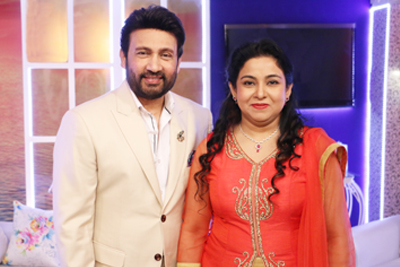
A good teacher can change your life. We may have come across this statement a thousand times in our lives but how many of us have been fortunate enough to have found that one mentor or that one person who would put their lives in the backseat to focus on making our lives better. Neetu Singh is one such name who has changed the lives of lakhs of students, whose eyes twinkled with the dreams of making it big by securing a reputed government job.
But how did it begin in her life is an interesting story of finding one’s life’s calling, of never giving up, of believing in self and of extreme hard work and passion.
An inspiration to her students Neetu Singh’s interaction with students started from the time when she was a student herself. Born in Giridh, Jharkhand she lost her father even before she could learn to read and write. At three, this youngest of seven she was the sixth of the sisters with an eldest brother who was 18. Even if means were not easy, the brother and mother ensured that Neetu got best education possible and attended a convent school.
After completing her class XIIth, she started to conduct tuition classes to earn a pocket money. Little did she know that in future she would change the face of coaching industry for government employment, Enamored by the word Paramount and always believing in leading and being number one, she named her tuition classes for students from Nursery to Std X in Giridh, the ‘Paramount Coaching Centre’ in 1992. A lot of us are told that we must look back in time to find out what shaped us into who we are and to identify our core skills. So it happened with her. Her training to become a world class tutor began when she first started teaching the children in her small town–some inspired just enough to get through exams, some willing to touch the skies.
For Neetu back then, this was not a career move but was a choice to pay for her expenses. As she finished her college, she came to Delhi looking for better opportunities not clearly knowing how she could do it. She banked upon what she knew best then, tutoring. She started taking classes in Maths and English and along-with enrolled into LLB at the University of Delhi. In 2003, she completed her law degree with flying colours and soon got to work at a reputed law firm but saw not much of a difference in her financial situation. Just graduate lawyers were not adequately paid. Still are not. She continued with her tuitions. Mornings spent in court, mid-days to evenings in teaching her students, and then an additional job at Wipro.
Working 18 years a day for over a year and a half, Neetu toiled harder with each day trying to understand the avenues in life that she could take to earn good and live better. “Along with the two jobs, I used to go to my student’s place to teach and would extensively travel in buses and be on the go all the times. There were days when I would come back home and just crash. I was so exhausted. I never stopped dreaming or gave up but realised I had to do something else to get success,” remembers Neetu Singh, while in between answering student queries over telephone.
Looking back the years of my struggle strike as the most beautiful and form the most valuable lessons that have taught her the art of living. On a constant lookout, and always looking for more opportunities, she one day landed in Mukherjee Nagar, North Delhi. Famed to be the hub of coaching centres for IAS and ancillary offering immense possibilities to people who could teach, she thought of starting her tuition centre. But with not much funds, she did not know what to do.
When looking for an affordable center to run her classes, she came across Aarohan Classes by Rajeev Saumitra. The name ringed a bell. She had come across someone on a matrimonial site with a similar name. Taking from there, she connected with Saumitra and discussed an option of starting classes. It turned out his classes were not doing well and he was more than happy to share the space.
This was the start of Paramount Classes in Delhi, in 2006. She started growing from five to ten and students a month by word of mouth. At the start, she was tutoring students in English: Spoken and Written.
In between, conspired by circumstances, Rajeev and she decided to marry and work towards expanding the base and later they registered the firm as a Pvt Ltd.
She was the only teacher and her fame and classes grew at leaps and bounds until 2009. But a visionary in her wanted to look ahead and expand to various other subjects and other exams too to grow. So she started hiring to expand the processes, courses, faculty and centres. Reputed to be the one who glamourised CPU, SSC exams and inspired many others to opt for these exams, she single-handedly showed brighter avenues to government job aspirants.
Under the academic and managerial leadership of Neetu Singh, Paramount kept growing–center after center–a few thousand students after another few. Neetu was always closely monitoring the business and continued to take classes even till a night before delivery of her firstborn. Harshit came to the world on 18th November 2008 and his coming into life also added another title to her existence here.
The West called Margret Thatcher, an ‘Iron Lady’ for having built the Great Britain for her courage, spirit and the determination to change things for the better and her students called Neetu Singh an ‘Iron Lady’ for proving her immense dedication and care to the results of her students. “I was taking classes even till a night before the delivery and was back in classroom within days of the delivery, with stitches still on my body, only because the result of the students mattered most. After this my students started calling me ‘Iron Lady’ in admiration,” explains Singh. It was this exchange of love that kept her going and building an empire after empire. But time took a turn and a fallout of trust happened. She faced domestic violence, ill-treatment, betrayal at the hands of her husband. In a case of cheating, her former husband took over Paramount and left her hanging in nowhere. Having lost everything that she built upon–brick by brick, student by student–only because of her passion and love to see her students shine, she rose from the ashes like a phoenix to launch KD Campus in the name of her father Shri Krishna Deo Singh. Within a year, KD Campus has 18 branches vis-à-vis 20 branches of Paramount that were built in ten years, and 80 KD Campus halls in Mukherjee Nagar vs 41 halls of the latter.
But tough people don’t give up easily. She was broken and disturbed but she knew she was not to give up. An author of over ten books, Neetu believes in considering one’s tough times as the best test of one’s mettle– Of identifying their inner strength and hidden skills, it is a test to know your potential. And that’s her success mantra. Coming out as a stronger and more driven woman, Neetu is an example for the women who don’t learn to say no and keep getting exploited at the hands of their husbands and in-laws. Even though she may lost money but she has won hearts. She believes her biggest achievement is her fan following, the love and affection of her students and says, don’t be someone who is scared of losing millions, be someone who can make millions.
Quotes By Neetu Singh
She concludes saying, do whatever, never fall in your eyes, and never let your dreams die.
Fall in love with yourself and then love anyone else.
Her biggest achievement is her fan following, the love and affection of her students.
She says, don’t be someone who is scared of losing millions, be someone who can make millions.
Yoga and
NGOS, Philanthropy
Philanthropy
Don’t give up your dreams and wishes.
The woman who had built the institute was left with nothing.Seeing so many strong women throughout her childhood inspired her.
Tough times shaped her.
Tuition classes was always the natural skill to be built
Calling her classes, Paramount
But life took a turn when she came to
Batches are run in Delhi and other cities.
Lakhs and lakhs of students
Highest success rate in the market.
18 branches in one year and 80 lecture halls in Mukherjee Nagar
Lakhs and lakhs of students
Highest success rate in the market.

Megha Mishra
A development Sector Professional who started her career in journalism with names like TOI and Tehelka. What inspires Megha the most are the stories of people who learned to fight, to make it large. As an editor for India’s Most Inspiring Success Stories, her aim has been to bring out the stories that inspire to aspire. And for her, it has only reaffirmed her faith in dreaming and achieving.
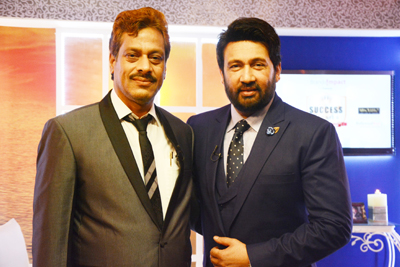
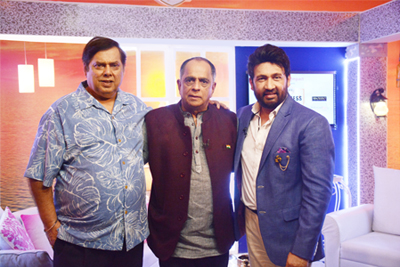
A believer of destiny and a pursuer of patience, Pahlaj Nihlani is a man who lives to love, laugh and ensure that the Indian cinema evolves to touch greater heights. In the Hindi language, Pahlaj is defined as the first born. As the first born in his family, Pahlaj ensured, time and again, that he was the first one to do things differently, be it home or work.
Even though he came from a generations old yarn business, running from much before the Independence of the country and was born in 1950, he had seen the nationalist fervour and sentiments early-on.(His date of birth needs to be removed. As it claims that the 1954 movie Fun2sh was the first one he marketed.)
Even though he came from a generations old yarn business, running from much before the Independence of the country and was born in 1950, he had seen the nationalist fervour and sentiments early-on.(His date of birth needs to be removed. As it claims that the 1954 movie Fun2sh was the first one he marketed.)
His passion for films and music started at a very young age in the heartland of Bollywood: Bombay. An eight-year old Pahlaj saw his first Sindhi film called, ‘Abana’ featuring Sadhana and got mesmerized to the journey that he could be a part of, while looking at the silver screen.
An eight-year old Pahlaj started to watch movies with his school friends. In a busy household like his, he could take money from home without asking anyone and go watch a movie. Till one day, his father found him taking the money and called the act, ‘chori’. An innocent boy he was spanked left, right and centre, making him wonder about the crime he had committed.
(He doesn’t feel about it because this taught him business and he could take care of it when father died. Also, learnt the importance of earning and then following passions)
Next day on, he was asked to accompany the father to work after school and that was to be his life. But, his love for cinema was not to be chained.
The basic learning of Cost Price and Profit inspired him enough to make for his watching films. How? Pahlaj’s first business came about when he started selling snacks to his classmates in school and of what he made, he watched movies for that. “Every day I would buy some sweets and snacks from the shop outside school and sell it to my friends and classmates at a marked up price and that’s where I earned to watch cinema,” an excited Pahlaj explains. “And then I would skip school to watch the 6 am shows of films at Lalbaug’s Jayant Cinema,” he recounts.
These morning shows were for the mill workers and it was here that he saw Madhumati and that was a big impression on his psyche. It was here where he learned early on the flavour of entertainment and how masses perceived cinema.
Destiny played its role and in August 1960 Pahlaj’s father died of cancer when he was about to turn 10. Shaken but undeterred he found himself taking the reign of the business from next day, “The only reason why I could handle the yarn business at that time was because I had been going to work for two years and had learnt the nitty-gritty of the trade. I believe if that accident of being caught taking money to watch films would have not happened then I would have been left clueless at the business and would have been unable to handle it all.”
His father’s towering reputation helped him carry ahead the business and he was greatly supported by his father’s friends and associates. This taught him the relevance and contribution of friends and family in the success of an individual.
With responsibility came independence as he could work, make money and watch movies as he grew. But his time to school was cut significantly and as it did, he raised funds for school and managed to earn attendance in return with charity shows. Dev Anand’s Funtoosh was the first in order which was screened at a theatre and raised money which was parted to the school authorities to help with odd things. Knowingly-unknowingly this was the start of his career in Bollywood at the age of 11. He learned how distribution functioned, how profits of were earned and spread over various costs and added another fleet of film distribution as a wing under his business. Knowingly-unknowingly, he also satisfied his ‘social worker side’ which always wanted to help people, which was later in life going to become a bigger side of his character.
In 1964, he wanted to buy ‘Phool Aur Pathar’ but was highly discouraged by the family. This Dharmender and Meena Kumari starrer was priced at 6Lakhs. In those days, it was a huge sum of money which if went into losses would affect the joint family’s combined finances. He gave in to the pressure at home and didn’t buy the movie for distribution but as the fate would have it, ‘Phool Aur Pathar’ was a huge success.
This made him trust his decisions and instincts far more. With new found confidence, he decided to quit the family home to focus on film distribution as a business. Right then he added another venture of manufacturing polythene bags to expand his prowess. His younger brother Mahesh got involved to give him a helping hand at it.
Soon Nihalani got married to his love of seven years, Neeta in 1973: A yet interesting love story full of passion that ends with fate’s call. The two had dated from school days and kept growing in love, but the two faced resistance as Neeta’s mother was not convinced with their relationship. She kept them from tying the knot. They both went to the same school and Nihalani would usually go on drives around her house. The mother thought he was a loafer but the daughter fell in love with the cute smile and big eyes. She would tell her daughter, “As long as I am alive you can’t marry him.”
Coming from a well to do background, Neeta’s family owned Cinema Halls in Hyderabad Pakistan before partition, and when they came to India, they bought cinema halls in Bombay. But there was a filmy connection in Pahlaj’s life and they had to get together. Destiny took its turn and in 1972, Neeta’s mother left for the heavenly abode. The next year they decided to come together and decided to live happily forever and ever.
So far, Nihalani was still making his niche in the film distribution. He would personally ferry prints of Dara Singh’s action films and other popular releases from Naaz building in Mumbai’s Grant Road neighbourhood, once home to Bollywood’s most powerful distributors and financiers.
Nihalani was blessed with two boys: Vishal and Chirag. True to their name, Vishal brought with him the magnificence and Nihalani launched his first distribution company after his elder son Vishal’s name in 1975. This year the tables turned, as films became his first business and plastic factory took a secondary seat. He sold Hathyara, Chor Sipahi, Jaani Dushman, Muqabla, Asha, Ghayal, among others from 1975 to 1979. All of them went to be super hits. The joint family also expanded into a hospitality business, and started Nagina at Grant Road, Premiere Hotel at Dhobi Taloan. But as recently as 2010 they discontinued operations in both these properties.
In 1979, pulling the producer’s strings he started work on ‘Haathkadi’ which was directed by Surender Mohan, that was Shatrughan Sinha, Rakesh Roshan and Sanjeev Kumar, and Reena Behl. This turned to be a super hit movie but it was not an easy task.
Only after three days of shooting, Sanjeev Kumar suffered a heart attack and refused to not shoot the film given his deteriorating health condition. But Pahlaj was adamant and upon his convincing, Sanjeev Kumar agreed to shoot even though his health was not better. This greatly inspired Pahlaj on work ethics and commitment. He was supremely touched by Kumar as Kumar only took his payment after the movie was done and released.
“It was the encouragement and love from the actors that fuelled me to make films and stick to the same people. You see the team would become a family and would be far more driven for collective success.” A hit after another hit and Nihalani’s card in Bollywood started to shine. Like the sheen of the gold, he touched actors and made them stars that shone to the best of their glitz and glamour. With this third film, Illzam in 1986, he launched the very versatile and popular Govinda which broke records! Then came another favourite character, Chunky Pandey, whose acting career was launched with the 1987 multi-starer film Aag Hi Aag opposite Neelam Kothari.
In the 1980’s an enterprising Nihalani also founded, Association of Motion Pictures and TV Programme Producers (AMPTPP) which is now renamed as The Indian Film and TV Producers Council (IFTPC) . It is a trade association in India of which Pahlaj was the president for 29 long years!
The one who loves to work behind the camera and keep doing good work, Pahlaj’s interest in social work drew artists to the stage for a charitable purpose. “Before I started this concept, there were only musical nights by Kishore or Rafi. Some for entertainment only, some had a purpose beyond entertainment. I was after that.” It started during the shoot of Aandhi Toofan in 1983, in Nepal. “I was touched by the condition of the police workers there and it was then when we thought of doing something. We set up an artist night and got actors to perform for public. Charged them and gave the benefit to the police there.”
Soon he brought this to his beloved Mumbai and started doing this for the Mumbai Police who has forever been supporting the film industry and making everyone’s lives easier and safer. “We also supported the Tsunami, Orrissa Cyclone, Bhuj Relief Fund, everyone that we could.”
Nihalani explains, “No actor used to charge back then. It was heartfelt charity but now things have changed. The industry only runs on money even in the name of charity. This is unfair. I hate how everything has become a business. There is no art, no love,” laments a die-hard romantic in Nihalani. Inspired by the silver screen and a responsibility towards the society, Nihalani took to the position of the Chairperson at the Central Board of Film Certification (CBFC).
Ask him about the controversies around his leadership and he has only one thing to say, “At its apex it is my moral and professional duty to up the standards of films in India. This is how I have lived my life. Working for this industry, ever since I can remember how can I ever do wrong?”

Megha Mishra
A development Sector Professional who started her career in journalism with names like TOI and Tehelka. What inspires Megha the most are the stories of people who learned to fight, to make it large. As an editor for India’s Most Inspiring Success Stories, her aim has been to bring out the stories that inspire to aspire. And for her, it has only reaffirmed her faith in dreaming and achieving.
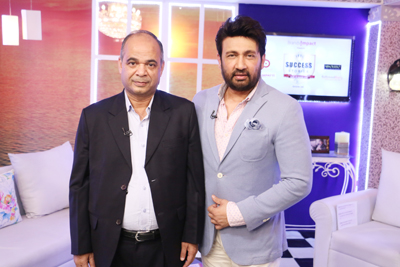
Success comes to kiss the feet of humility and honesty. Rightly said and an epitome to this is RK Sharma, whose spirit to take on challenges and win one fort after the other is the one that can inspire anyone and everyone. Sharma was born in a small village of Bijror, in Uttar Pradesh but because of his father’s transferrable government job, he grew up in parts of Mathura, Uttar Pradesh.
It is here where he grew playing in the fields and excelling at academics in school. Never did he stand a rank below the first all through his entire school life. The only time he did, he asked for revaluation and came out standing first. A humble and honest background provided by his father, Shri Ram Sharan Sharma, who was employed with the irrigation department sowed in the seeds of the essential life lessons of integrity and fairness. Staying in the mystical land of Lord Krishna, the values of simple living, high learning and of following one’s ‘Dharma’ was further ingrained.
With a zeal to ‘make it big’ and succeed in life, he came to Ghaziabad in pursuit of continuing higher education but ended up joining a security and services firm as a clerk for salary of INR 350 a month. Today, after about 30 years, he sits on an empire worth over 500 crores. But it was not an easy ride and it was not a ride that he takes the full credit for. To him he owes a major part of his success to the mentorship of R.P Jain, on whose advice he first came to Ghaziabad and consulted him for every decision of life: big or small.
‘Hardwork and honesty’ are the two pillars of his strength while ‘positivity and dedication’ are the two traits that kept him going even when the going got tough. He gets thrilled at challenges and nothing gives him more satisfaction than ‘solving problems’ and maybe that’s why Sharma’s B4S Solutions Pvt Ltd, is the most sought after solution for guarding operation in industries, offices and contract labour solutions in industries, outsourcing staff for MNC and other industries, outsourcing staff for site leasing, operation and maintenance and other services for telecom industry. But it doesn’t stop here. He has many ventures that have expanded and grown along with. A family man, his morning walks whenever he is in town and the ‘chai’ with his wife, Kusumlata Sharma, are the two things that bring the peace back to his mind.
He doesn’t undermine her contribution in the success either. To him, it was her constant support and best care given to the two sons that has made him grow in his career so much. “I am such a workaholic that I was working on the day of my wedding too. I finished my day duties and then went to the mandap. To be with one such workaholic my wife of course has been a pillar of support and love.”
A messiah to his workforce, there has never been a time when the salaries have been delayed or any former employees gone unpaid. About 28,000 employees across verticals under Sharma’s care and leadership, for Sharma, the real heroes of any business are the actual grassroots level workers.
In his words, “We all can dream to grow and expand but if the working class gives up, doesn’t follow you, then no matter how big the dream is and the scale of the business is, it will fail. So, it is a bit impractical to expect the company will work without the support of the working class.” He mostly mobilises with the grassroots workers and considers their problems like his own. To him, the mantra for his success lies in this to a great extent. A firm believer of giving back more than you take, he has always helped his relatives grow further and taken their progress in life as his own agenda.
“Anyone who comes to me looking for some work or some help or even advice, I am always there. On certain days of the week, there are people who can walk upto me and discuss their careers and other things about life. This, I think is the key to my relationship with my team across all the businesses that has made me more successful in scaling operations. I treat my people like humans and not just resources.” It doesn’t stop here. The other five businesses across the country in which he has been expanding and growing at a rapid rate are: are Bharadwaj Packaging and Corporations, Can n Cam, Vascoda Holidays Residencies, B4S Infratech Pvt Ltd and Swaraj Automation Ltd.
Enterprising in attitude and with an approach to grow, for Sharma, his legacy that he leaves for his sons is what will be remembered and will be his giving back to the society. That he thinks is the purpose of his life.

Megha Mishra
A development Sector Professional who started her career in journalism with names like TOI and Tehelka. What inspires Megha the most are the stories of people who learned to fight, to make it large. As an editor for India’s Most Inspiring Success Stories, her aim has been to bring out the stories that inspire to aspire. And for her, it has only reaffirmed her faith in dreaming and achieving.
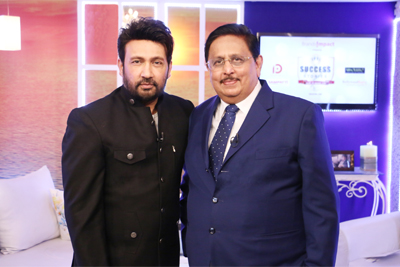
Nitin Shah’s story starts from the time when technology was a word people were mostly wary of, when personal computers were a dream which only a few could think of. Developed in the West, computers were to change the life and picture of the world for the coming years and give India a booming Industry to harp on and later become leaders at. From the pre-PC eras is the story of one such enterprising being from Mumbai who took the reign of going digital and changing the way India would work the digital space. This is the story of a man whose skill and focus –singlehandedly–worked to give digital solutions to almost everything.
Born to a close-knit, educated and loving Gujarati family of South Mumbai, Nitin was the elder of two brothers. A hidden artist looking for creative solutions to everything Nitin grew up in a family that imbibed in the values of togetherness and effective business processes. As most visionaries and revolutionists identify their passions early, so did Shah. When he was as young as a class 7- boy, his interest in technology bent him towards learning technical drawings, mechanical tools and structures, etc. His father had valued education as much since he saw the worth it brought to his life and always supported his pursuits to focus on education. He found his kick in giving solutions to any problem that anyone was facing around him. His father, a stock broker back then identified that trait early on and advised him to study science and not follow his footsteps of joining the stock brokerage business.
Shah’s sharp mind and razor sharp focus made him crack the reputed IIT in first try without any preparation but a doting mother didn’t let him leave the city to join this residential programme and he opted for a college in his home city. “I think I had played with technical concepts and numbers so much that it came naturally to me and I had a very good working knowledge base which helped me clear the exam easily. It was no cramming, or studying for the exam. I was preparing for life and when you prepare for life, you rarely fail.”
He had wanted to study electrical or mechanical engineering and he enrolled into a top college in Mumbai, Veermata Jijabai Technological Institute. He finished his Bachelor’s in Engineering in Electronics from here in 1977. But what’s interesting to know here is that this was the first batch where computers were introduced and he took it head-on. He learnt the nitty-gritty about the machines and how the systems functioned and as it had to be, he excelled at it. Soon after which, he landed a job in CMC where he worked for six years.
Probably somewhere here is when life had decided his future goals and destiny. Shah had to identify and follow the path. “While I was in college, I got a chance to work on mainframe systems. The IT giant IBM was shut down due to political reasons as several mainframe companies took over. This is when I sensed a vacuum in the IT industry as there were hardly any other, especially Indian-owned IT service providers.” This was the start of a life-long mission to uproot all technical glitches and give India one of its finest new age digital services. This is the time when a computer would occupy the space of a room of about 400-500 sq ft. He landed a job with Computer Maintenance Corporation and was one of the first few persons in the country to lay his hands on an IBM PC, which is how PC Technology entered India. After which, networking, internet, cloud and wifi followed as things kept evolving.
Shah was aligned to leadership roles and high value clientele from the start. In 1984, the firm was catering to Maffatlal Consultancy Services that can be compared to the status of TCS today. A huge firm, which would face losses of INR 20-30 Lakh per hour, incase the systems stopped working. (Maffatlal did he work and intern in. Need to cross check). Nitin Shah had often handled this client out of his turn. His dedication and problem-solving streak would take an additional responsibility to fix their systems even if he had to work late nights.
Once, one of their components in the mainframe was not working and another agency was catering to the firm. No one could fix it and it had been two months! The company was facing huge losses. This is when their CEO called for Mr. Shah and asked him to help. A hesitant, but full of respect Shah went ahead to meet him. “I initially refused as I was working in another firm where I was working on digital equipments. This was in competition to the agency catering to Maffatlal. But after much insistence, I agreed and solved the problem in one day.”
This was the biggest opportunity knocking on his door and he was smart enough to welcome it with open arms. “It was because of my work that the company got so impressed that their CEO Mr. RS Bengali asked him to take the contract and start his own services.” Though he was shy and not as confident, Bengali’s one statement, “Nitin Bhai I have more confidence on you than you have on yourself,” made the difference and changed his life.
It was not a linear turn in his life. Coming from a conventional business family of Gujarati community, even though there was a business streak in the mind he was pulled by the perks of the new-in-culture, white collared job. As very few wanted to leave this kind of a lifestyle but he thought of taking the dip! This was because a lot of times, he was nagged about working in a job and not running a business. He finished his Post Graduate Diploma in Computer Management from Jamnalal Bajaj Institute of Management Studies, Mumbai in 1983 and a few days later to that he got married to Pragna Ji.
And ever-since the wedding, his family and everyone else started pushing him to start the business. Though his wife told him just one thing, “Follow your heart and I am there with you”
Shah spent some time to calculate the risk and analyse the market situation. He saw a huge gap in the industry. “It was a vacuum left by IBM and we were targeting to fill in their shoes. The risk was huge but slowly I was courageous and I knew that I could do it. I just had to plan,” explains Shah. Year 1984, he marched on the entrepreneur journey with two persons, 250 sqfeet of space and INR 5000 as investment. Today he stands at the helm of the affairs of Allied Digital with the company’s presence in over 94 countries and a staff of 3000 and yearly turnover of 500 cr.
How did it happen? The constant innovation and a race to keep up to the market is the success mantra.
In the first phase, it was a profited oriented but a single-man driven company. They took on as many clients as they could, making as much profit as possible. This helped them create a huge corpus and they could expand in their second phase. The biggest clients they were Pfizer, Bombay Dying, Forbes Campbell, State Bank of India, Central Railway, et al.
Till 1993, the company expanded exponentially and Shah hired more and more people. He started to hire CXO level people. The company aimed at delegation and execution while taking burden off Shah and driving many more hands to build the pyramid of growth.
In 2001 they tweaked the strategy to focus on a growth strategy. They became picky and would only work on the following four principles: Networking, Hard disk storage, infrastructure management services, virus and information security. The most wondrous thing is that even though the world was hit by a recession. Allied Digital was the only firm hiring people because of the new strategies that were aiming at the future.
Smart strategies lead to smart growth and in 2007 they entered another phase of their business: inorganic growth driven. Two rounds of IPOs. (Initial Public Offerings) and they went on to acquiring two companies. One of them was a Bengaluru based company at seven times of the initial cost of acquisition. The other was a US based NASDAQ listed company in services division. Their IP was 69 times over-subscribed and they were rocking the stock market.
He realised that the company’s growth could not be stopped because of monetary constraints. In 2012, we realised that the next phase had to be transformation driven, which is the current phase too: The post-PC, digitised era where our lives our totally dependent on the digital. As the world was embracing the digital, Shah found a new age to transform the business.
Just as recently, Allied Digital was conferred upon with ‘India’s No 1 Brand Awards 2016’ in IT Services Category on from International Brand Consulting ( IBC) Corporation, USA and more importantly also the most coveted award for ‘The Best Safe City Project’ of India at India’s premier event ‘Smart Cities India Expo 2016’ in Delhi. With these several awards, Allied Digital is the front runner in making Safe & Smart Cities in India and making Digital India as per GoI’s very big initiative worth ₹98000 cr in next 5 years. In the last three years, Allied Digital has done several projects in the security services domain. For example, it has provided manage security services to one of the government bodies in the US, wherein it managed end user computing devices by providing DLP, Anti-Virus, and Anti-Malware solution. In the data center space, it has provided VA and PT for all devices. Allied Digital projects Indian security industry to be at an inflection point and only those players who have strong security practice will survive.
Safeguarding the systems of as many, Shah’s own mental peace comes from a family trust run in the name of his wife and mother’s name ‘PadmaPragya’ trust. Through this, they are trying to help the needy and educate the underprivileged children. A Jain temple and a dharamshaala has been built in Shahapur, near Mumbai. They also run a Khakhra centre too support women with livelihoods. This is managed by his younger brother’s wife.
This is his way of giving back to the society. In an untimely death, he lost the two most important women of his life. A young boy, he had come running from college, having stood first! Elated beyond his belief, he rushed home to tell his mother of achieving this. The moment he walked in, he realised his mother had died. That moment he learned the biggest truth of life: Never be too happy or too sad, because you don’t know what life will give you next.
In 2005, he lost his wife, Pragna in another unfortunate instance. Shah explains, “We were normally talking, everything was calm and fine. She held her body as her eyes widened and just uttered one thing: Take care of Nehal and Dhara.”
His NGO is an attempt to keep the memory alive of the women, who gave him strength at all junctures.
A caring son, a guiding father, an inspirational elder brother, a doting father-in-law, there are shades of Nitin Shah that the employees of Allied Digital can easily miss in his high rising, office at Nariman Point, Mumbai. But a mellifluous singer, an awarded theatre artist, a foodie, and a painter, are other colours of Shah that one cannot know about if you don’t know him very closely.
But ask Shah in one line who is he and he will proudly say, “In one line, I am a trouble-shooter, who doesn’t know how to give up.”
Accolades:
Nitin Shah is a member of Manufacturer’s Association of Information Technology and Traders Association of Information Technology and also holds a position in the Business Expert’s Panel in Indian Express publication.
Nominated in the Who’s Who of the World list, he won the International Professional of the Year in 2005.
Nominated for the 2006 Entrepreneur of the Year Award by Ernst& Young.
Shah is also recognized as the Big Daddy of Channels by DQ Channel. UDYOG RATNA Award by IES and as a Best Business Leader for the year 2011 by ITPV, Asia Pacific Entrepreneurship Award as the Most Outstanding Entrepreneur, 2011 and been featured as Mr. Modesty in THE SPIRIT OF ENTTREPRENEURSHIP a Coffee Table Book by Bennett, Coleman and Company Limited (BCCL), his achievements don’t end.
Just as recently, Allied Digital was conferred upon with ‘India’s No 1 Brand Awards 2016’ in IT Services Category on from International Brand Consulting ( IBC) Corporation, USA and more importantly also the most coveted award for ‘The Best Safe City Project’ of India at India’s premier event ‘Smart Cities India Expo 2016’ in Delhi.

Megha Mishra
A development Sector Professional who started her career in journalism with names like TOI and Tehelka. What inspires Megha the most are the stories of people who learned to fight, to make it large. As an editor for India’s Most Inspiring Success Stories, her aim has been to bring out the stories that inspire to aspire. And for her, it has only reaffirmed her faith in dreaming and achieving.
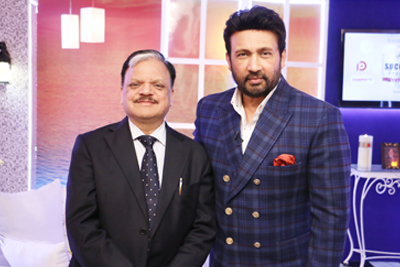
Doctor | Success in giving the right upbringing | Innovation | Young and old in its 25th year of existence Sarvodaya Hospitals can be credited to have changed the face of Faridabad’s healthcare. But in the past 25 years of being on the mission to provide quality healthcare at affordable rates, Dr Rakesh Gupta, Chairman and Medical Director, Sarvodaya Hospitals has always had to be on his toes to achieve this feet.
But in his journey, he has not been alone. Supported by his better half Ashu Gupta, without whom he thinks this success would have been impossible, the two have made progressed towards success, inch by inch.
Dr Gupta says, “One can’t expect to reach the top spot in one day. It takes smaller but consistent steps to reach where you may aim to be and in this journey I have been fully supported by my wife, who has not only been my strength but also the one who has better managed things for me. If I am a planner, she has been the executor. If I am the dreamer, she is the achiever.” The dream of giving Faridabad premium healthcare services was born when Dr. Gupta was a senior resident at Escorts Hospital for about a year. He has finished his medicine from the Medical College, Rohtak and during his days at Escorts he realised the dearth of super speciality centers in his hometown: Faridabad. For almost everything residents here had to cross the border and go to Delhi. The ones who could afford private healthcare could do that and the ones who could not had to resort to the long queues at the public hospitals, this pained him.
Inspired by his father’s bent towards working for the society, Dr. Gupta was driven to serve the society too. As a business family that produced and packaged Mehendi, he had always acquainted himself to the problems faced by the locals and economically backward people. So when he was struggling with mathematics in school and pioneering in biology it was clear that his calling was to be a doctor. Pushed by his father, he could see his vision clear and put all his efforts into it.
He thinks, “God showed me a path to be custodian and serve people and that’s what I did.” As it happened, in college, he saw his passion towards the intricacies of a human body and found himself being more passionate about it. Even though an arranged marriage, for Anshu and Rakesh their hearts struck a chord on the common grounds of compassion and zeal to do something big.
They got married soon after Dr. Gupta finished his MD in Internal medicine and Sarvodaya was born in the shape of a small nursing home with 5 beds in sector-16. “At that time, there were a lot of clinics, run by husband and wife who were both doctors. But Anshu had studied humanities so I had to hold the medical say. I used to wish if she had studied medicine. But I had no idea of her hidden talents and strength.” They were blessed with two boys, of which one has followed the footsteps of his father and is finishing his MD in Internal Medicine and the other is soon to study Masters in Business to be an ace manager like the mother.
The nursing homes in Faridabad were overburdened with a lack of emergency facilities. Working round the clock, with no specific time for him, they built from 5 to 10 beds and to 20 beds, and soon launched casualty services. Dr. Gupta was overburdened with work, and even when he would take a short nap he would be bombarded with calls. It was then when his wife first started to share the load by managing his phone as he would slip into sleep. But fuelled by luck and life, when both boys grew up a bit, the Dr. Gupta decided to expand to Sector 19, in 1997 with 30 beds and multi speciality hospital and he found Anshu standing next to him, from day one, sharing the load. With their focus was on service for all at affordable rates, making sure patient went back happy and healthy, in next three years, they grew to 75 beds and also launched ‘Life In Wheels’ ambulance services to get timely and professional help to faraway patients.
Anshu recalls, “We believed in making sure that the patients felt a personal touch and were best taken care of. Mostly lack of communication and shortage of time, patients start to feel that they are not being looked after. But that’s what we ensured, that they felt we were there for them at any given time. It was difficult to manage as work always took priority but we ensured our personal responsibilities were not affected either.” Good parenting for working couples they believed came with involving their children in each and every discussion about how they worked; their struggles and their plans. “The children not only understand the parents well, but learn to be responsible at an early age. I feel this gives them a lot of confidence on their own decisions and inspires them,” adds Dr. Gupta.
This comes as a reflection on the ease of communication the two shared with their parents early in their life. For them the meaning of success lies in being able to strike a balance between personal and professional, with demanding careers like these. In the next 7 years, Sarvodaya grew and continued to expand into units and sections but faced a lot of difficulties since it was old constructed building and they had to take space around as and when available. This made general operations cumbersome and complicated for example, one had to cross the road to get to the laboratory and the lifts could not be installed. It is then they realised that they would need an additional set up, a bigger, better one, a more world class one.
While Dr. Rakesh kept at the top of medicine, Anshu slowly started to take over all the operations and administration. In the words of Dr. Gupta, “We would not have come this far if not for my wife. I would dream, she would make it happen. I would think she would execute. In making Sarvodaya reach where it has, it is 90% her and 10% me.”
And then in 2007, after ten years of their day and night hard work, they started the construction of Sarvodaya Hospital and Research Centre in sector 8. Within a year, they had it ready with 200 beds and embarked on a journey to get the best of the best to the city. “I believe I am a custodian to do better for the community, to contribute and give it back and this was just an effort to do the same. Today we have 1200+ staff and we are always full with patients it is because we focus on cure+care to address any case.” But this was not as easy, healthcare is an ever evolving field and in the last ten years the face of healthcare has changed drastically in India. Keeping up with the competition and the upcoming trends Gupta felt that the primary thing that helped them come this far is relying on innovation and the young talent.
Dr. Gupta likes to call himself–a passion driven Doctor-entrepreneur and Anshu studied arts in her college but both learnt how to manage healthcare while being on the job. A small set up was easy to manage with a couple of hundred of employees but when they started the Sarvodaya Hospital and Research Center in Sector 8, they realised the need for new systems and practices to take things ahead. “This was a difficult time since things were moving at a fast pace and we were not very attuned to new practices and how to manage a hospital at a large scale.” It was then when their relatives, Amit and Ashish, young graduates in business and accounts came ahead to bring in fresher perspectives and newer approaches to make things seamless and more aligned and grow with them.”
1. Faridabad’s first Haploidentical bone marrow transplant
2. Center for foreigners coming down, leaving delhi hospitals
Tucked in Sector-8 of Faridabad, Haryana is Sarvodaya Hospital and Research Center. If you are not familiar with Faridabad you may expect it to be a local, regular hospital. But as you wheel towards the hospital, taking a left from the Mathura highway, you realise that you are in for a surprise. There stands tall, Sarvodaya Hospital shining white and bright. Bustling with people and activity, it is a state-of-the-art hospital spread across 4.25 acres, including 300 Beds, 65 ICU Beds, 6 Operation Theatres, and a floor based Cath Lab.
Step into the lobby and you are welcomed by a courteous staff, a medical store on right, and the lounge on left is full of local people with an international coffee shop next and a popular food chain in the atrium above. The lobby is overflowing with patients and their caretakers leaving one not many options to sit, you can identify the aroma of lemongrass, coming from the wellness center on the right, whiffing into you and automatically transporting you into a spa. But behind this swanky hospital is Dr. Rakesh Gupta’s simple heart with a desire to provide quality medicine. An MD in Internal Medicine, for him having a state-of-the-art hospital was a dream that he never imagined in his earlier days.
Born and brought up in Faridabad, to a business family that had Mehendi farms and production units, his father always stressed on working for society and believed that it is only work done for the benefit of the people that can take one ahead. So when the time came to choose a profession, Rakesh chose medicine. “Back then there were only two choices, medicine of engineering. Since my father was very keen that I should become a doctor to serve the society and I was not good with maths, I opted for medicine. While at it I could see the passion I shared about it. Ten years of immense hard-work turned Rakesh into Dr. Rakesh who had a dream to shape the healthcare sector of Faridabad,” explains Dr. Gupta, Chairman and Medical Director, Sarvodaya Hospital.
In the 1980’s Faridabad was not replete with facilities and healthcare was an untouched sector and Dr Rakesh was on a mission to change that. The seed thought for this started when Dr Rakesh was a Senior Resident at Escorts Medical Center for about a year in 1989. With a hundred bed it was the only hospital in Faridabad back then that could offer quality and multi speciality services but was an expensive proposition. His stint here sparked his imagination and in 1991, after marrying Anshu, ‘Sarvodaya’ was born in the shape of a small nursing home with 5 beds in Sector 16, Faridabad.
Back then there were not many places where a person could go. One had to go to Delhi to a government hospital or burn a hole in the pocket at a private hospital.
The nursing homes in Faridabad were overburdened with a lack of emergency facilities. Working round the clock, with no specific time for him, they built from 5 to 10 beds and to 20 beds, and launched the casualty services facility. This set up was lucky for them as they were blessed with two boys who were soon to be a part of every decision the parents would take about the hospital. In 1997, they moved to sector 19, with 30 beds and multi-speciality facilities but affordable for everyone. Till the first hospital, Dr Rakesh was handling things on his own but as they grew and expanded, Anshu saw herself getting more and more involved and had soon started to handle all the business. With their focus was on service for all at affordable rates, making sure patient went back happy and healthy, in next three years, they grew to 75 beds and also launched ‘Life In Wheels’ ambulance services to get timely and professional help to faraway patients. In the words of Dr. Gupta, “We would not have come this far if not for my wife. I would dream, she would make it happen. I would think she would execute. In making Sarvodaya reach where it has, it is 90% her and 10% me.” The elder son already on his way to finish his MD in Internal Medicine just like his dad and the younger one is soon to start his MBA programme, to get global practices in the business.
Programs Run By Dr. Gupta:
1. Women Empowerment-
Save Girl Child Initiative in 2013– The awareness campaign was done in Faridabad, where NGOs of Faridabad working for the cause were felicitated by Mr. Deepender Hooda.
IRW- We worked with Faridabad Police for to raise awareness about IRW (I respect women App)
Beti Bachao Beti Padhao Abhiyan in 2015- We motivated and worked with Sarpanches & Zila Parshads to take steps for stopping female infanticide and for girl education.
We support mass marriages every year.
1. Green Initiatives
We supported the largest Tree plantation in city with NGO Navchetna.
We also regularly carry out tree plantation with Rotary Club.
We participated in ‘Polythene Free Faridabad’ campaign of Red Cross Society Faridabad, where we organized sessions with NGOs and RWAs about harmful effects of polythene and distributed free cloth bags in societies, shops and villages.
We initiated Organic farming in Panhera village by motivating farmers. We also promoted organic farming, in association with DAV college Faridabad.
2. Working for Animals- We work with organization ‘People for Animals’ for saving animals.
3. For Thalassemic children- We regularly organize free blood and blood transfusion for thalassemic chidren with NGO- Foundation Against Thalassemia.
4. Health for All
Swasthya Jan Chetna Inititaive- We regularly organize free health camps and awareness sessions in societies and villages and distribute free medicine for poor.
Free Surgeries- For last three consecutive years, for weaker economic section, we have been organizing free surgeries for children with Cleft Anomalies in association with Rotaplast.
Free polio correction surgeries- This is being done with ISHWAR NG0 for many years.
Eye donation awareness campaign

Megha Mishra
A development Sector Professional who started her career in journalism with names like TOI and Tehelka. What inspires Megha the most are the stories of people who learned to fight, to make it large. As an editor for India’s Most Inspiring Success Stories, her aim has been to bring out the stories that inspire to aspire. And for her, it has only reaffirmed her faith in dreaming and achieving.
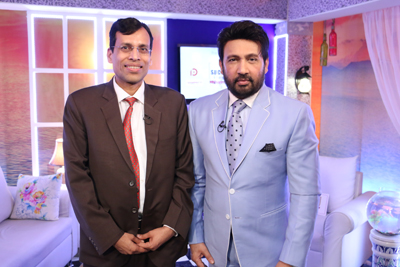
“A good doctor treats the disease; a great doctor treats the patient who has the disease.”
Born on August 1968, in a small village Mohna, Chittorgarh (Rajasthan) to a family of four brothers and sisters, Dr. Suresh K Pandey’s childhood has been one full of struggles. His father (Shri Kameshwar Prasad Pandey) was a school teacher and his mother (Smt. Maya Pandey) was a housewife. Comprising of ten members in a single family, and surviving a childhood where the basic necessities were a luxury, Dr. Suresh K. Pandey was a hard working, dedicated and self- disciplined man. His keen interest in Opthalmology developed through his constant interaction with his grandfather during childhood who had learned few skills in Opthalmology from a British Opthalmologist.
Dr. Pandey is medical graduate of Rani Durgawati University, Netaji Subhash Chandra Medical College, Jabalpur. He completed his residency in Ophthalmology from prestigious Postgraduate Institute of Medical Education and Research(PGIMER), Chandigarh, India.
Coming from a Hindi medium background, Dr. Pandey faced many problems during the initial days of his medical studies. But as they say, “A heart that wills is a heart that wins”, Dr. Pandey not only managed to overcome this barrier but also secure top 20 ranks in his exams. His hard work paved way towards greater opportunities and he went to work in USA and Australia from 1998 to 2006.
Inspite of having all the luxury, opportunities and the comfort of a good job and lifestyle in a foreign country, Dr. Pandey’s heart still yearn to come to back to his own country and make a difference in his field. His vision was to come back to the city he was born and provide quality eye care treatment that can be reached out to people across all sections. What started as an idea between him and his wife Dr. Vidushi Sharma finally became a reality in the year 2006 and SuVi Eye Institute and Lasik Laser Center was established in Kota, Rajasthan. Within a short span of ten years, this center gained international reputation for providing cutting- edge ophthalmic surgery as well as providing free eye surgery to several needy patients. During past 10 years in Kota, Dr. Pandey had treated about 7,50,000 eye related patients and have performed 45,000 routine and complex eye surgery including cataract and Lasik laser surgery.
Dr. Suresh K. Pandey has been the recipient of “Achievement Award” by the American Academy of Ophthalmology. Over a period of time he has also received several prestigious awards for his research & surgical innovations, which include Best-of-Show Video Award, Best Poster Award, Best-Paper-of-the-Session Award for the surgical videos, scientific posters and papers in the National and International Ophthalmology Congresses such as American Academy of Ophthalmology (AAO), American Society of Cataract and Refractive Surgery (ASCRS), European Society of Cataract and Refractive Surgery (ESCRS) and Asia Pacific Academy of Cataract and Refractive Surgery (APACRS).
The Indian Intraocular Implant and Refractive Surgery Society has honoured Dr. Pandey with a Gold Medal twice , one in July 2000 and then again in July 2013. Dr. Suresh K. Pandey and his wife, Dr. Vidushi Sharma have been honored by Govt. of Rajasthan for their outstanding work in the field of ophthalmic teaching and elimination of preventable blindness.
He, along with his team is actively involved in various social initiatives by IMA. His team is running a Mobile Eye Care Unit and providing eye care facilities to the patients residing in the rural area of Rajasthan and adjoining Madhya Pradesh since 2006. During past 10 years, more than 1,00,000 OPD patients have benefited and have received free eye surgery due to his initiatives and efforts.

Megha Mishra
A development Sector Professional who started her career in journalism with names like TOI and Tehelka. What inspires Megha the most are the stories of people who learned to fight, to make it large. As an editor for India’s Most Inspiring Success Stories, her aim has been to bring out the stories that inspire to aspire. And for her, it has only reaffirmed her faith in dreaming and achieving.
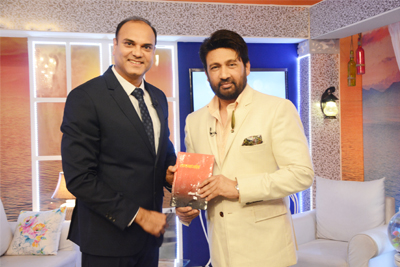
What does it take to create a strategy which is cost effective and helps streamline processes? Nothing much, except that it requires the right concoctions methodologies and guidance to shake sluggish companies out of their complacency. The methodology, we understand, is Lean and Six Sigma. It combines the best practices of lean (waste elimination within a system) and Six Sigma (tools and techniques required to improve existing processes) to get rid of wastage and streamline processes for impactful results across verticals.
Amitabh Saxena realized this at some stage in his life, left behind a lucrative career in Thailand and returned to India as an early proponent of Lean and Six Sigma. As CEO of reputed Lean Six Sigma consulting organization Anexas Denmark, which he founded in Denmark when he was residing there in 2006, Amitabh is credited with projects designed to ensure annual savings worth $200 mn across industries.
Typical examples would be HR professionals who glean data effectively while evaluating people; or software companies that complete projects within a short time span; or manufacturing companies which save costs and improve efficiency by applying statistical techniques. The change, both visible and effective is attributed to the implementation of Lean and Six Sigma.
Amitabh, a jet setter, who admittedly spends only 30% of his time in India, was preparing to leave to London and UAE to visit his clients, when we met him at his residence in a posh gated community in Bangalore.
Early Days
Amitabh was gainfully employed in a petrochemical company in Thailand and earned a very handsome dollar salary in late 1990s. Somewhere along the line, he heard about Lean and Six Sigma and decided to enroll for a course. As he completed the course, he shared the experience in a newspaper in Bangkok. Surprisingly, many readers wrote in, some were curious and others expressed their thoughts.
Amitabh was quick to realize that he had all the qualities required for a career in this new field. He spoke many languages, was humourous and a poet by inclination. He decided to fall back on these attributes along with his expertise in analytics and statistics — key essential elements of Lean and Six Sigma — while selling the concept to industries.
Amitabh and his pediatrician wife Varsha shrugged off their comfort zone and returned to Mumbai. Though Amitabh never had a job on hand, he managed to find a footing, worked briefly in various metros including Bangalore before establishing his India presence in HSR Layout office in Bangalore. Though he took time to settle down as a full-fledged Process Excellence professional, he integrated its essence into training modules conducted in the companies where he worked. He experimented with European professionals, implemented hard core savings initiatives and even trained freshers.
During his stint in Bangalore, he sensed untapped potential in multinationals, banking and IT companies. He knew it was time to make the right move, and exited corporate life to start Anexas.
Lean Six Sigma De-Coded
Anexas has trained more than 25,000 persons, and the training for Lean and Six Sigma is provided through the belt based training system similar to that of martial arts. Like in the case of karate, the belt personnel are designated as white belts, yellow belts, green belts, black belts and master black belts.
Amitabh’s idea is to empower and make people self sustainable so that he can exit from the scenario and explore newer domains. Just to given an example, in a healthcare conglomerate having many hospitals, it was found that time taken to discharge a patient took around three hours. The delay was too long and when he asked the reason for delay, the hospitals said they were short staffed. Strangely, when hospital staff was in full attendance, it was the same situation. Upon probing it was found that the billing process itself was cumbersome and had nothing to do with employee strength. Several procedures were eliminated to reduce the billing process to just 10 minutes. That in short, is Lean Six Sigma. It simply means the company eliminates all frills including unnecessary processes, overstaffed environments, variation and excessive waste. So the organization just focuses on what it wants and looks for means to achieve that goal. Amitabh goes to that particular industry and trains the people. It’s a five-phase training programme titled DMAIC, an acronym for define, measure, analyze, improve and control. It turns out that by getting to the root cause of the problem, errors are reduced and processes are systematized.
Though Amitabh and his team follow the broad guidelines of Lean and Six Sigma, they tweaked it to make it market-savvy. A case in point is human resource (HR) practice. It’s a known fact that HR professionals are deluged with resumes and staff data. With information overload, it becomes difficult to trace even basic details. Amitabh stepped in to fix the problem. He realized that the company had many procedures within the system which was the root cause of the problem. As he mentions, it is easy to fix a process than to fix people. By changing the processes the professionals trained by him improved the HR processes manifolds.
He recalls how the then Head of Quality of L & T Infotech, Dr. O.P. Jain in 2003 commented that he fell in love with statistics after Amitabh’s training. Amitabh has many testimonials and awards to his credit, which are proudly displayed in his Bangalore office. Basudeb Roy, Additional Director with Colgate Palmolive mentions in a video testimonial that Amitabh brilliantly trained and consulted a group of engineers, immersed all of them into a single pool and brought them to a common denominator of high level statistics. Gautam Majumdar, DGM, Steel Authority of India mentions about the crores of rupees of savings the steel plant has seen after following the advice Amitabh gave regarding correct usage of control charts.
Word Spreads
Initially hesitant companies were introduced to a free Six Sigma training. A pilot project followed, during which they got hooked on. After that a word-of-mouth publicity took over. Today, Amitabh’s Facebook and LinkedIn page does the necessary marketing. Lean and Six Sigma has grown into a community of two lakh certified individuals. While many of them have evolved into independent entities, some of them returned to Amitabh to join him in his endeavour. Amitabh too needed that support as Anexas, an Indian company grew to include franchises overseas in Denmark, UAE, Kingdom of Saudi Arabia, Singapore, UK and Canada. He gratefully acknowledges the huge contribution made by Pradeep Sharma, one of the Master Black Belts who got trained in 2006, and now a partner handling Middle East Operations. As Anexas has spread and Lean Six Sigma has generated a fair share of awareness, Amitabh plans to ramp up his presence by expanding operations in the US and Australia.
Keen to explore new vistas, Amitabh lapped up the idea when a company wanted him to implement best practices from the Jim Collins book ‘Good to Great’.
Lessons learnt in Life
Amitabh spent his childhood in Nagpur and his mother had a great influence in shaping him up. Herself a Ph.D. in three subjects, she inculcated in him the habit of studying well during childhood, which made him a topper in his school and an NTSE scholar. Also Amitabh’s literary inclination and poetry skills are her contribution. Similarly, Amitabh’s wife Varsha has been a pillar of support and strength and as he says that without her contribution, nothing would have been possible, as she has very well taken care of the India office, home and children as he hops around the world.
Amitabh’s success has not come without its share of failures. He says that though some people will ditch you, but still we should continue to trust. At different stages, many persons blatantly broke promises and even stabbed in his back, but by continuing to trust people he came across some of the most wonderful persons who walked with him through thick and thin. He values these people.
Amitabh is also very well known poet in Bangalore literary circles and regularly recites his poetry in Hindi and Urdu poetry forums. He has also authored a book which has collection of poems which he wrote since his childhood starting from the age of nine!
He is a regular speaker in world-wide global conferences on Process Excellence, Lean and Six Sigma and won many reputed awards in various national and international forums.
All this and much more have helped Amitabh evolve into one of the most successful and well known Lean and Six Sigma specialist, partly created by circumstances and partly by passion. He’s now looking forward to a new dimension whereby he plans to train economically backward individuals in Lean and Six Sigma and try to link it with job opportunities.
Amitabhh’s success story is truly inspiring and deserves to be told to the nation .
We wish ‘the Amitabh of Lean and Six Sigma’, the very best.

Megha Mishra
A development Sector Professional who started her career in journalism with names like TOI and Tehelka. What inspires Megha the most are the stories of people who learned to fight, to make it large. As an editor for India’s Most Inspiring Success Stories, her aim has been to bring out the stories that inspire to aspire. And for her, it has only reaffirmed her faith in dreaming and achieving.
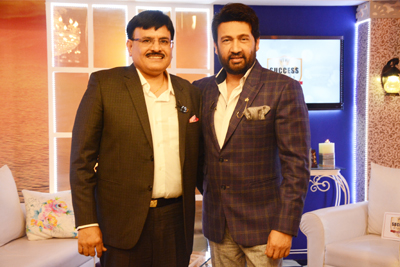
When globalisation was beginning to spread its wings and India was beginning to expand its horizons across spheres, this young, first-generation student of medicine was brimming with a vision to give dermatology in India a new face, a better looking one.
Today, Dr. Jagdish Shakiya stands at the helm of the largest skin care chain in India’s fastest developing state: Gujarat. With an increasing presence in Mumbai and Delhi, his practice in cosmetic dermatology and laser medicine for two decades, he mainly contributes toward making Gujarat the first state to witness ground-breaking advancement in the field of aesthetic and cosmetic dermatology.
To Jagdish—coming from a family of farmers of Saurashtra Gujarat, opting for a highly competitive profession in medical science was not an easy thing. He calls it a ‘matter of chance,’ what can also be called destiny’s call. His first plan was to choose engineering but God had a better idea for him and as he did, Shakiya ended up studying medicine and later went ahead to make even more difficult choices of choosing less popular field: Dermatology.
When he did, he explored and realised a dearth of good doctors in dermatology and decided to touch the artistic side of him and beautify faces. “During my post-graduation, I got a chance to visit Surat and found that the city had such vibrancy and a culture that would be more receptive to my practice in studying and beautifying skin,” Shakiya explains.
But nothing came in easy. He had lived a protected life in a highly conservative set-up, so much so, even till the age of 20, Dr Shakiya had not set foot in a train.
Initial years of being on his own, shaped him into a strong, forward looking and thinking individual who soon decided to have his own practice and fight against all odds.Indeed, Shakiya had to toil hard, go out of his way to make sure he succeeded.Years of hard-work, persistence, and continued efforts to reface dermatology in the country, his prime struggle was to make Indians understand the importance of skincare.Starting with zero, it was the time when 90 percent of skin diseases were incurable. There was not much awareness about most disorders and lack of high-end treatments to common skin fungal infections like eczema and psoriasis had made it a tough call.Starting with a 300 square feet space- a visitor’s room and a consultation room, Dr kept at it and continued to learn from global practices that could be implemented locally.
The initial five years, made him burn the midnight oil, as he worked from 9 in the morning to 12 in the night. For three years he provided free treatments along the lines of cosmetic dermatology to make people understand the long-term and short-term benefits of the technology and its treatments. He travelled to 40 countries and attended various international conferences exchanging details, learning of the latest treatments and technologies introduced around the globe. Currently, he has around 120 upgraded high-tech laser machines across India providing a nothing-less-than the modern treatment to a patient. He is not just a practicing doctor, but has also trained 60 dermatologists for laser treatments, for free. He is credited at creating a bunch of trained skin care specialists who are running successful skin care and laser treatment clinics across India. His treatment center masters– Botox therapy, Micro derma & chemical peeling, CO2 laser & Facial resurfacing, Filler, Mesotherapy, Sclerotherapy, Hair removal, Derma roller and in the next leg of expansions, he aims to start 110 clinics in the two-tier cities.
He believes, “Starting a business is an ultra-marathon: You must be able to live with improbability and push through a crucible of obstacles for years.” He advises to young entrepreneurs, “Do not be blinded by passion alone, keep an eye out for reality. Be ready to learn and unlearn.”

Megha Mishra
A development Sector Professional who started her career in journalism with names like TOI and Tehelka. What inspires Megha the most are the stories of people who learned to fight, to make it large. As an editor for India’s Most Inspiring Success Stories, her aim has been to bring out the stories that inspire to aspire. And for her, it has only reaffirmed her faith in dreaming and achieving.






























